SALT architecture and art festival celebrates the Arctic landscape
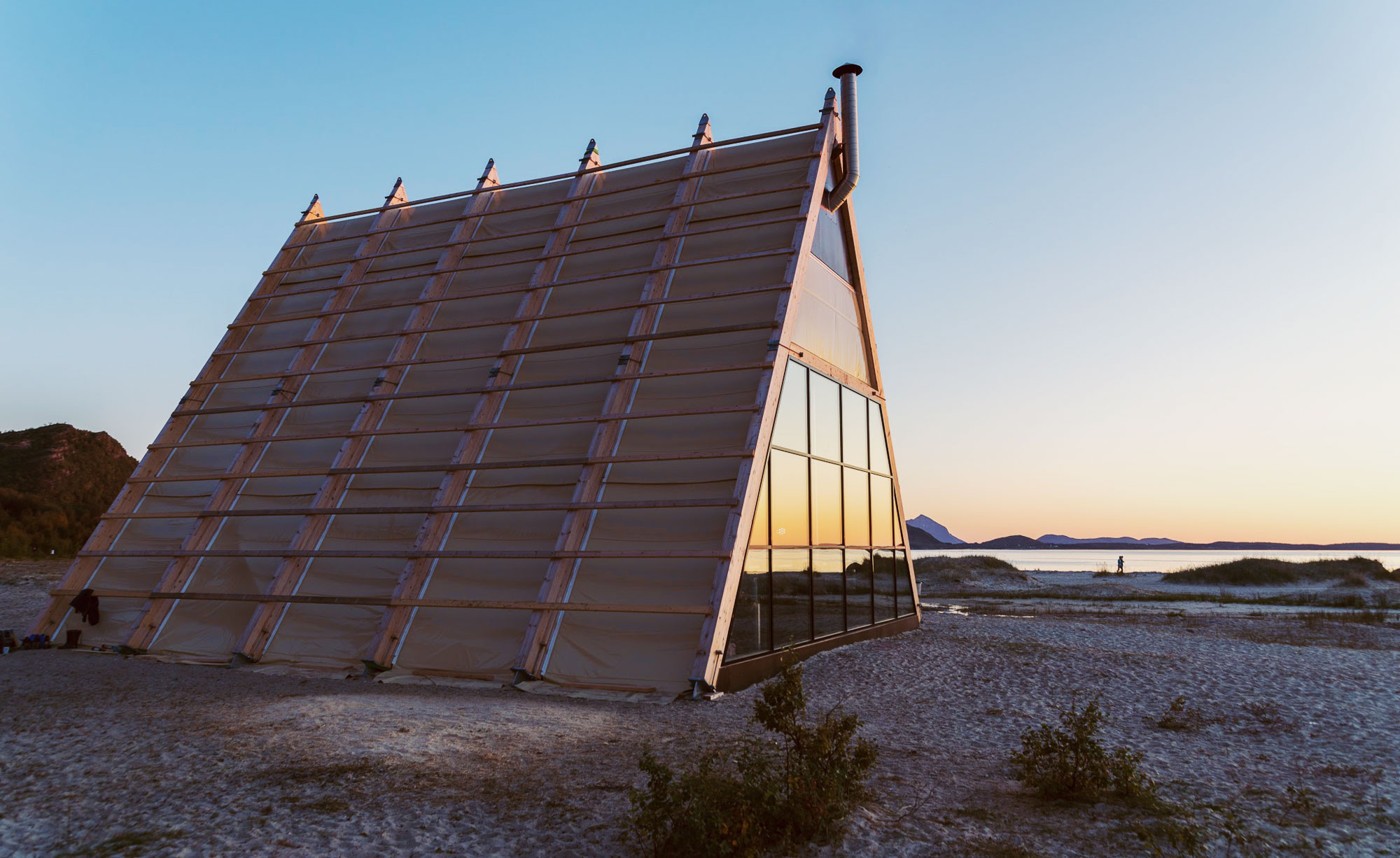
A remote island in the Arctic Circle may seem an unlikely destination for an architecture and art festival. But, for visitors to SALT - a nomadic event inspired by the 'movement of animals and seasonal rhythms' of the Arctic - the journey is all part of the experience. When we approached rugged Sandhornøya by boat last week, we were met by a surprising sight. Its normally deserted stretch of beach was teeming with people and a series of angular structures stood tall against the dark silhouette of the mountains. Travellers had flocked from far and wide for the festival's opening weekend, set in this extraordinarily beautiful landscape.
SALT's co-founders Erlend Mogard-Larsen and curator Helga-Marie Nordby spent two years exploring Norway's northern regions, before they found this wild stretch of beach. Here, they invited Norwegian practice Rintala Eggertsson Architects to create three structures. These would act as the frameworks for a year-long programme of art projects, concerts, plays, readings and culinary experiences.
Rintala Eggertsson Architects drew inspiration from fiskehjell (ancient fish racks, used for drying cod) for their 'Arctic pyramids'. Says Mogard-Larsen, 'It's hard to compete with the nature. [The architects'] expression reminds us of our role in the landscape, and introduces something new and relevant into this epic scene.'
Visitors move between these structures to experience film, sample local seasonal food and beer and enjoy the world's largest sauna. For our first night on the island, chef Svein Kristian Malin rustled up a three-course feast, including smoked whale meat, reindeer stew and cheese from a farm on the nearby island.
The most impressive of Rintala Eggertsson's structures is the landscape for Chinese artist Yang Fudong's new site-specific film installation. Fudong has created eight films, screened on box-like structures. His hypnotic works eschew sound, instead using landscape to evoke a tale. 'I think about how to tell a narrative by using not people speaking so much, but how the wind tells a narrative, or how trees tell a narrative,' he says. 'It's a feeling of yesterday, but it's actually tomorrow.' Fudong explores ancient traditions, bringing them into the present. Adds Nordby: 'There is something similar in the way he is thinking about his filmmaking and the way we're thinking about this project.'
Nordby doesn't know how long Rintala Eggertsson's structures - which touch lightly on the landscape and can be easily transported to new locations - will survive the extreme storms during the winter months of their island residency. But that is part of the point. Their creations are a reminder of the daily battle against the elements that the 400 inhabitants of Sandhornøya face.
Alongside Rintala Eggertsson's designs are a series of tent-like volumes, conceived by local artist and architect Joar Nango - a member of the indigenous Sami people - in which visitors can stay. Based on Sami architectural practices, each 'Njalla' has a glass roof and is built on wooden skis, to allow the inhabitant to pull their lodging around the beach to find the perfect spot from which to experience the midnight sun or northern lights.
Mogard-Larsen and Nordby have also commissioned international architectural students to create three additional wood structures, siida, which sit on the furthest point of the beach and can also accommodate visitors to the festival. Or, they can sleep like we did on our final evening, on reindeer mattresses beneath the stars. Right on cue, the Aurora Borealis put on a dazzling display across the sky.
SALT will remain in situ until 6 September 2015, with the second part of the year's programme of performances, art installations and discussions raising questions about the effects of climate change and the exploitation of the region's resources. 'Few people are fully engaged with these important topics, so we are looking to approach it differently, informing them through visualisation and experience,' says Nordby. When its sojourn on Sandhornøya is over, the nomadic festival will continue on its eight-year journey across the northernmost parts of our planet, stopping off in regions like Greenland, Iceland, the Faroe Islands and Alaska.
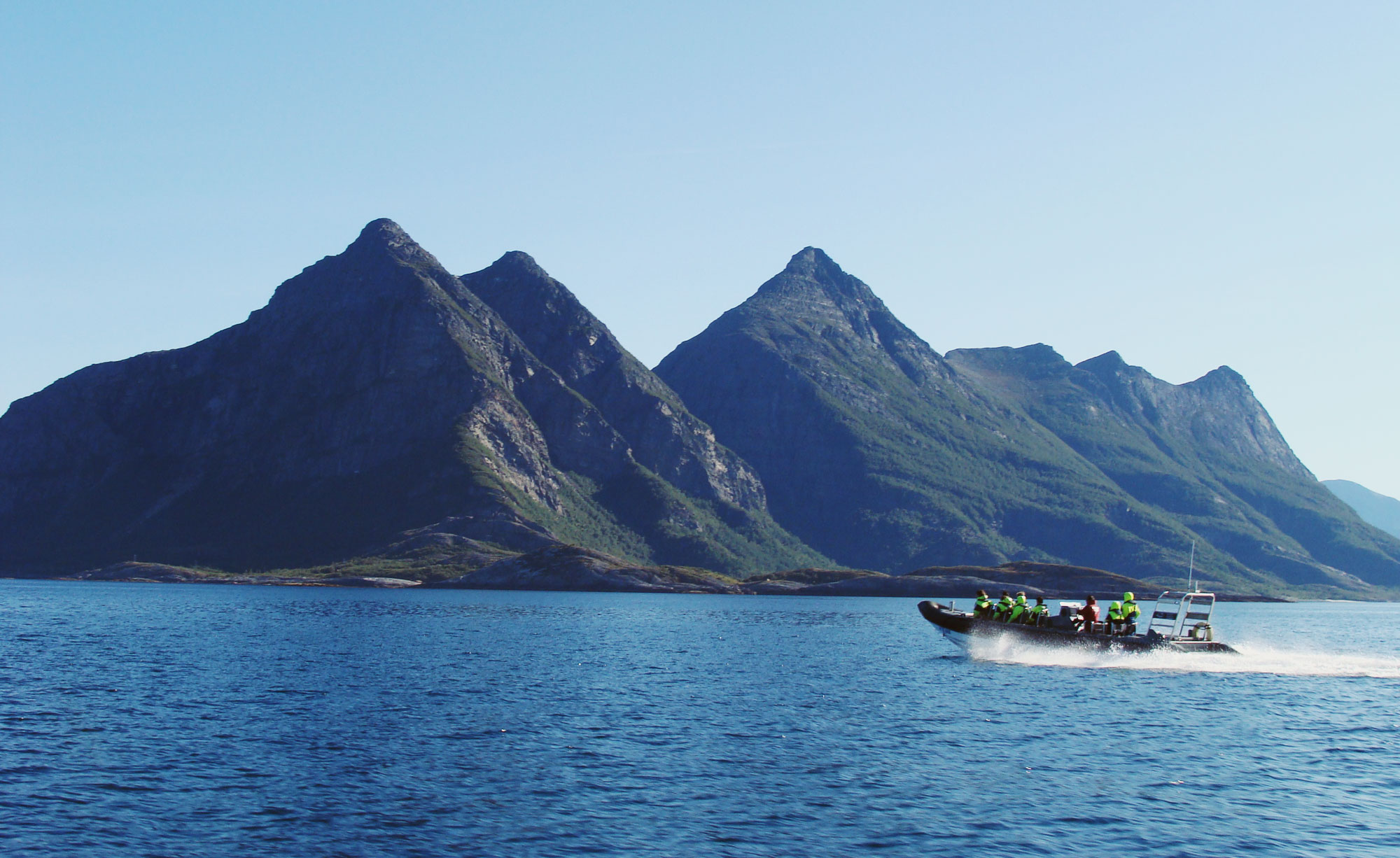
Visitors reach the island by boat from the town of Bodø
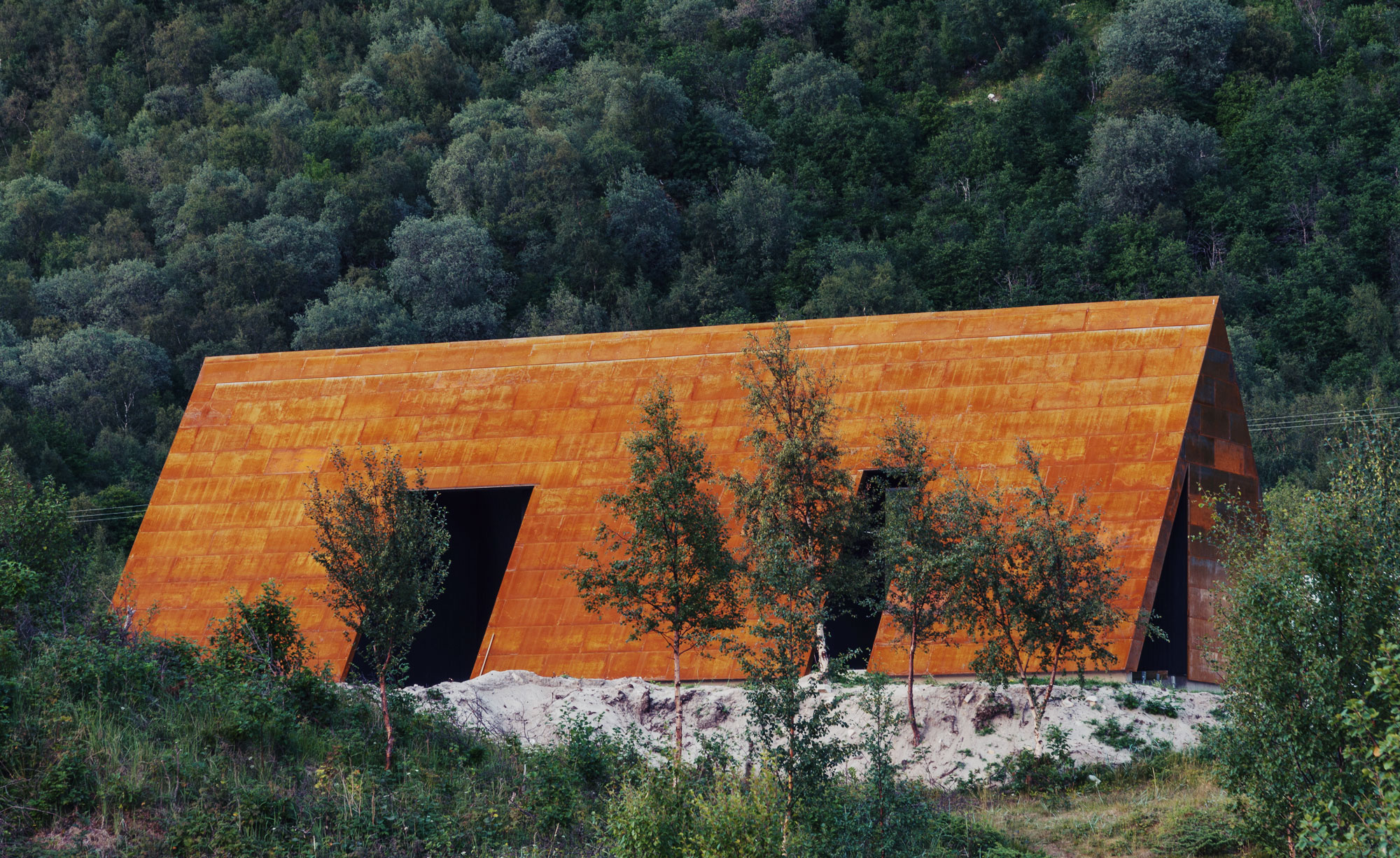
Rintala Eggertsson's structures act as the frameworks for a year-long programme of art projects, concerts, plays, readings and culinary experiences.
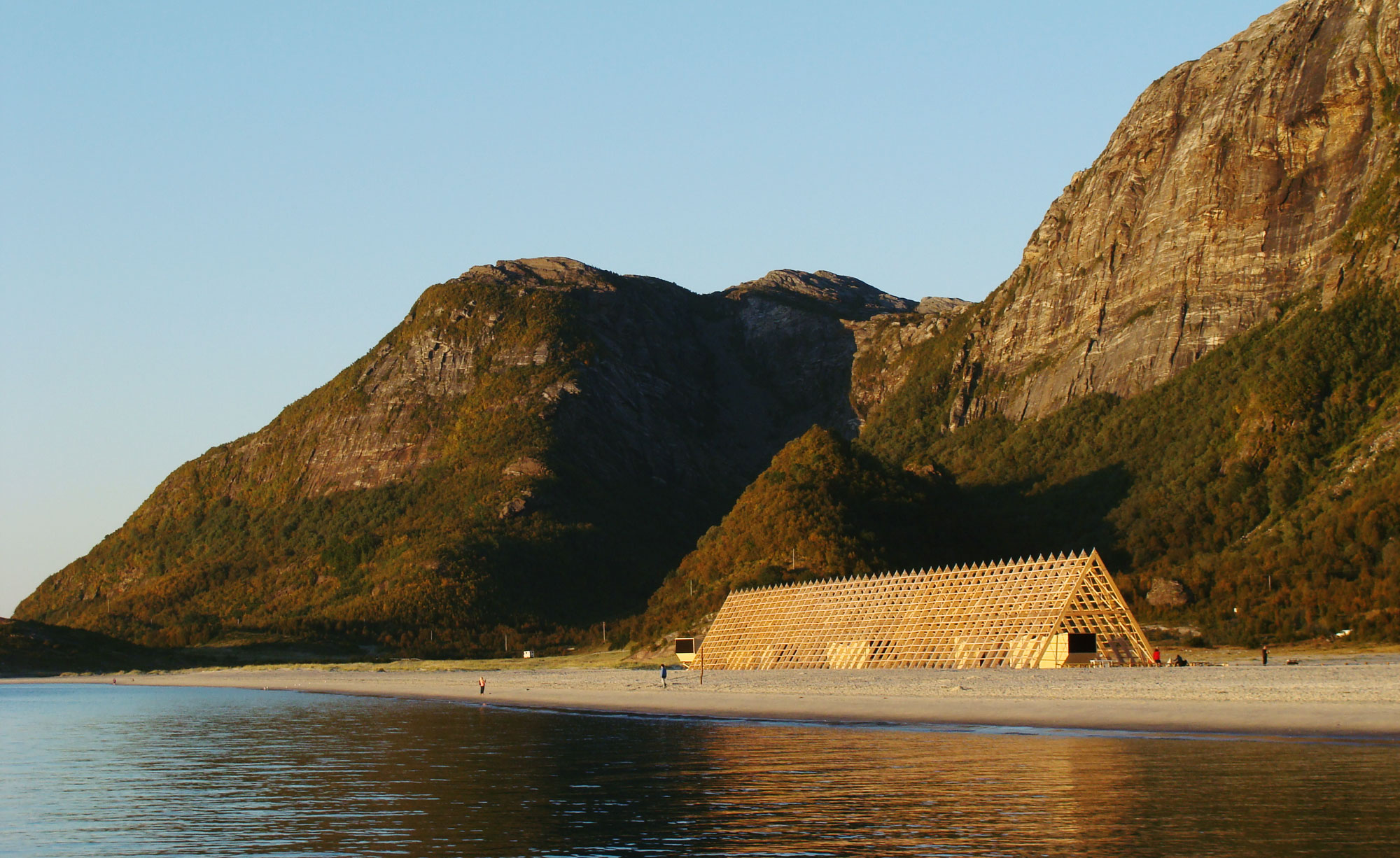
Their designs stand out against the dark silhouettes of the mountains...
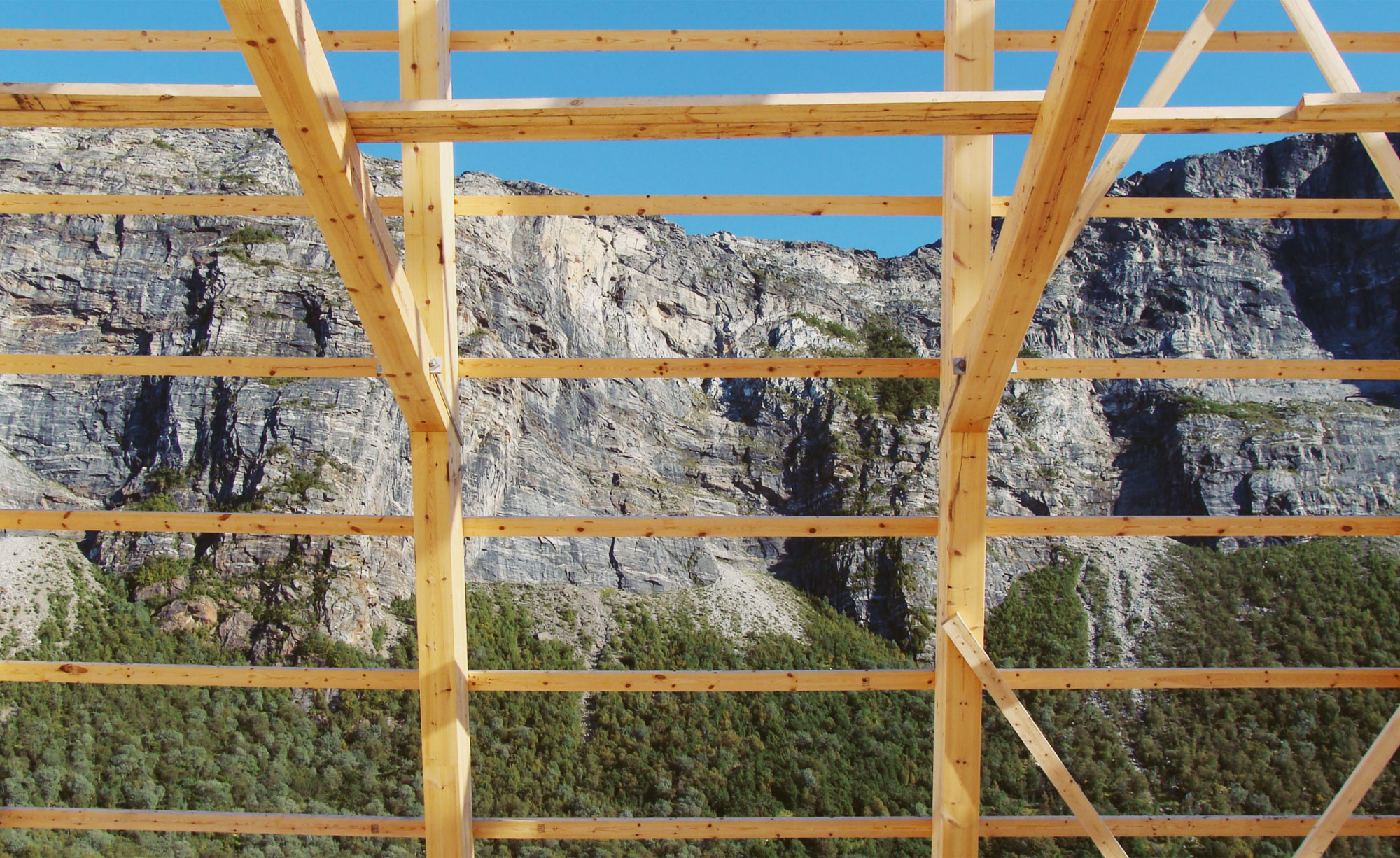
...where eagles are known to nest in the vertical rock face
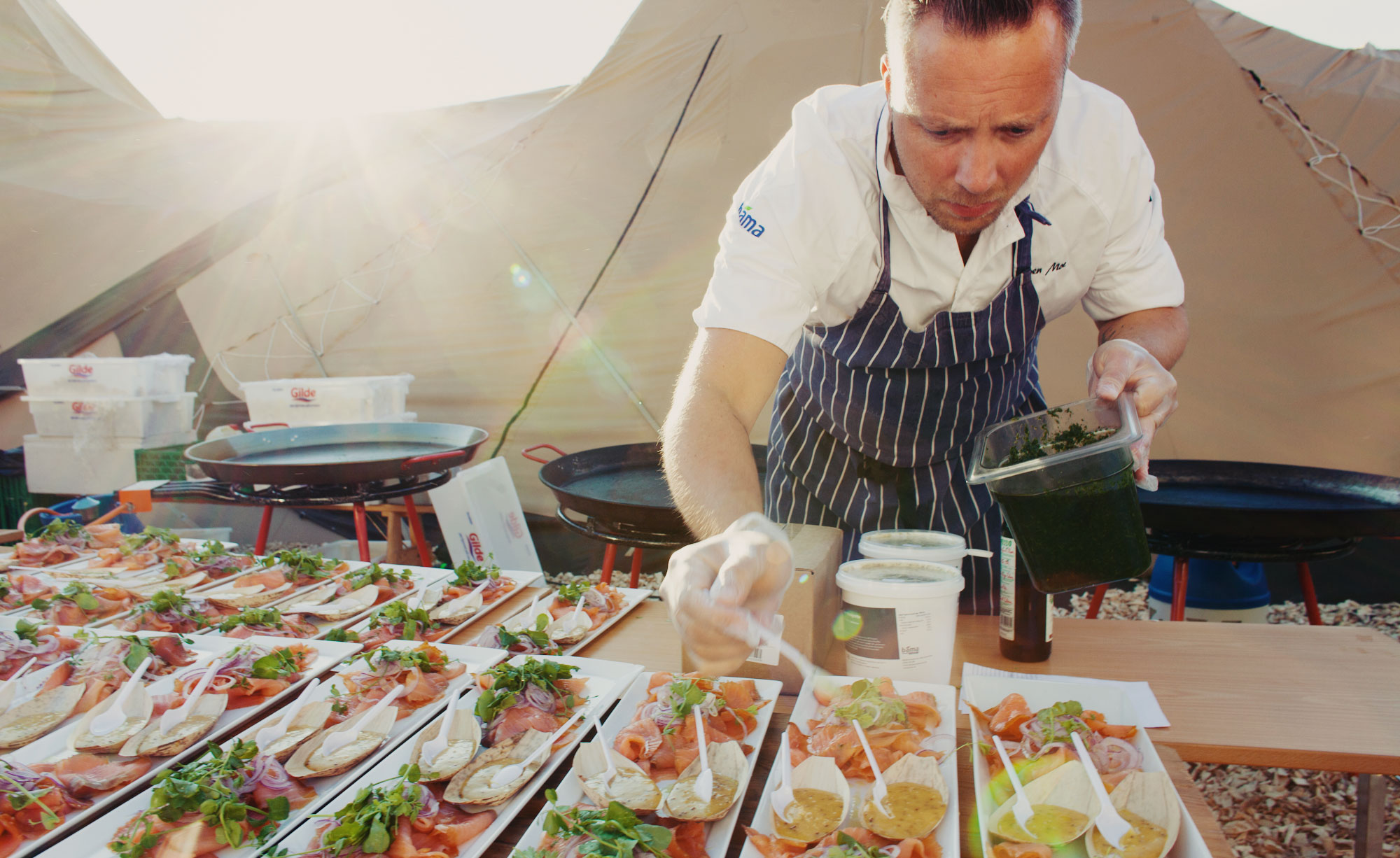
For our first night on the island, chef Svein Kristian Malin rustled up a three-course feast, including smoked whale meat, reindeer stew and cheese from a farm on the nearby island.
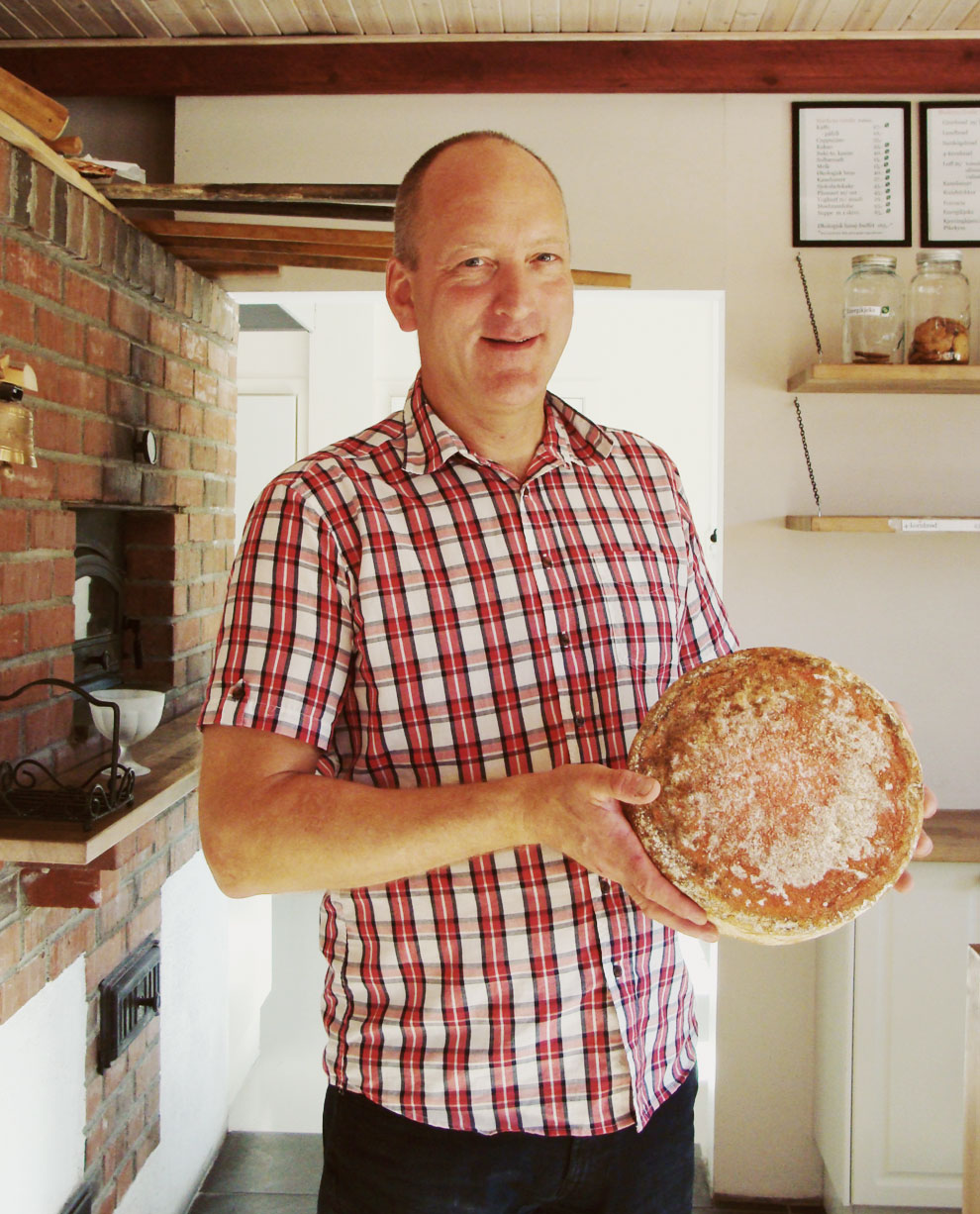
Farmer Oddbjørn Olsen shows off his award-winning red cheese
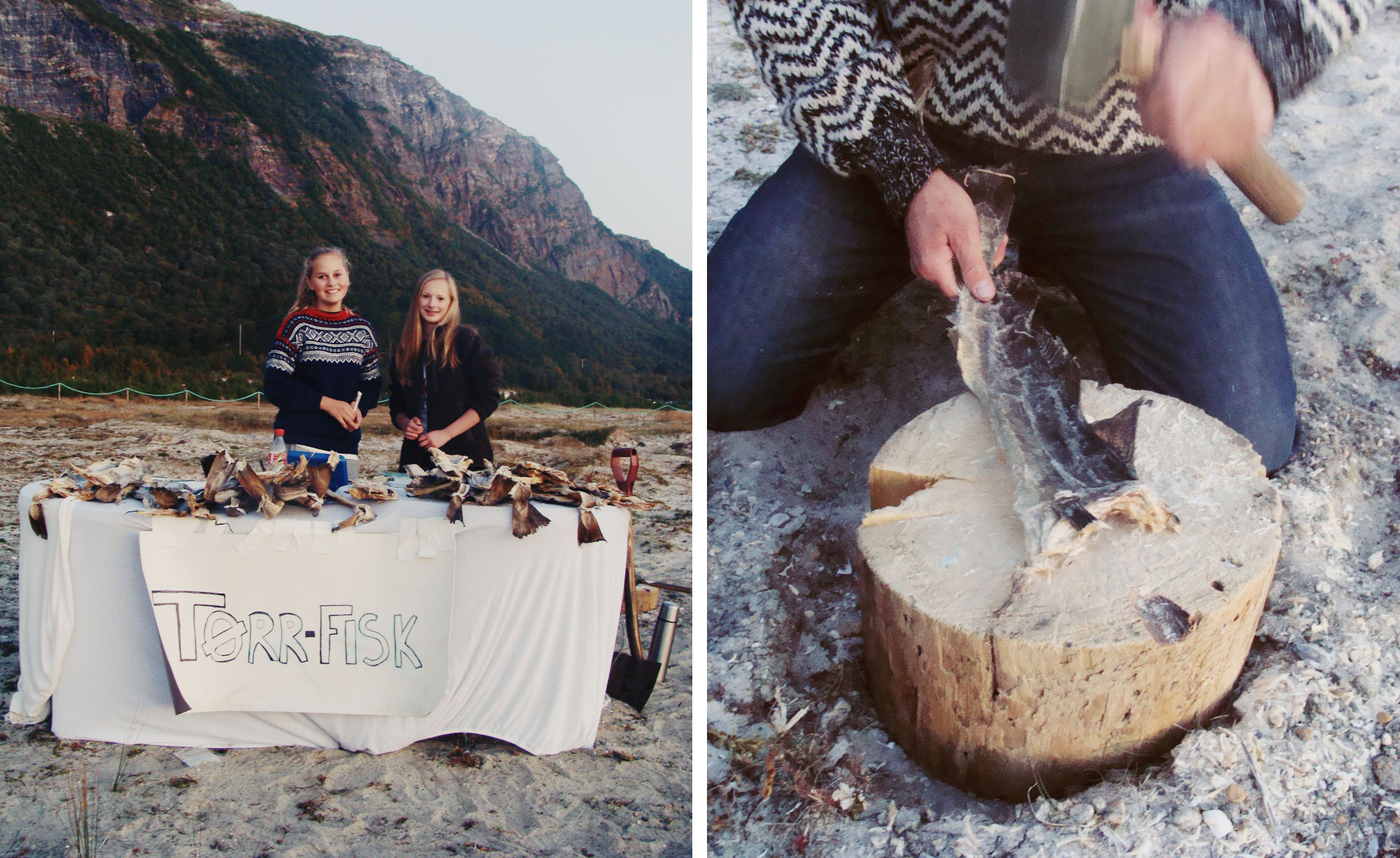
Locals sell salt cod to the festival goers on the beach. The fish once dried, is very tough, and is hammered with a mallet, to loosen the flesh - it can then be pulled into strips and eaten. The fish has a woody texture, but is surprisingly tasty
![Rintala Eggertsson drew inspiration from fiskehjell (ancient fish racks, used for drying cod) for his 'Arctic pyramids'. Says SALT co-founder Erlend Mogard-Larsen: 'It's hard to compete with the nature. [Rintala Eggertsson's] expression reminds us of our role in the landscape, and introduces something new and relevant into this epic scene'](https://cdn.mos.cms.futurecdn.net/rESFyNbAransaAfzcRyGzh.jpg)
Rintala Eggertsson drew inspiration from fiskehjell (ancient fish racks, used for drying cod) for his 'Arctic pyramids'. Says SALT co-founder Erlend Mogard-Larsen: 'It's hard to compete with the nature. [Rintala Eggertsson's] expression reminds us of our role in the landscape, and introduces something new and relevant into this epic scene'
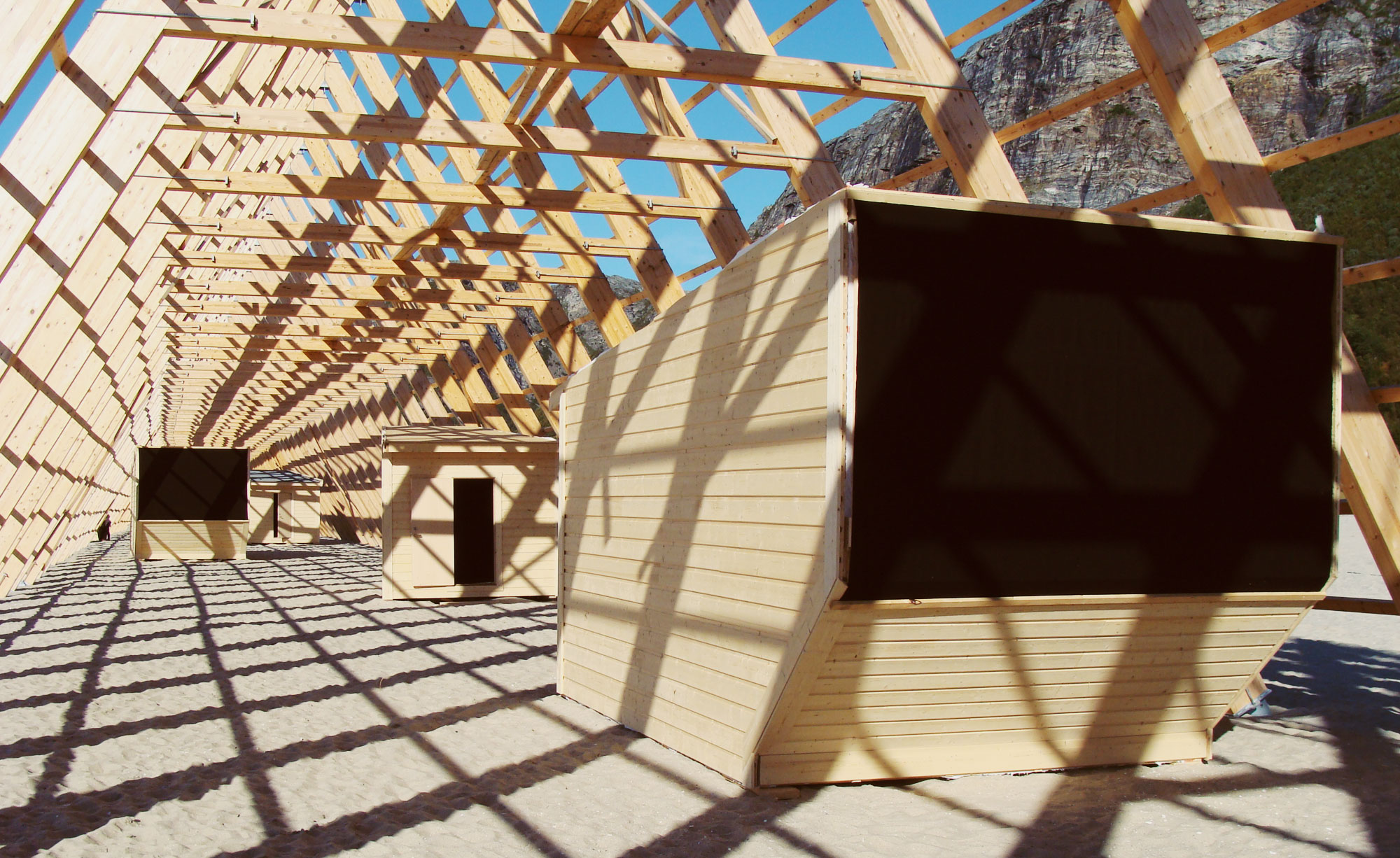
Strong shadows fall across Rintala Eggertsson’s largest pyramid structure, where Chinese artist Yang Fudong’s site-specific film is being screened across eight separate cabins
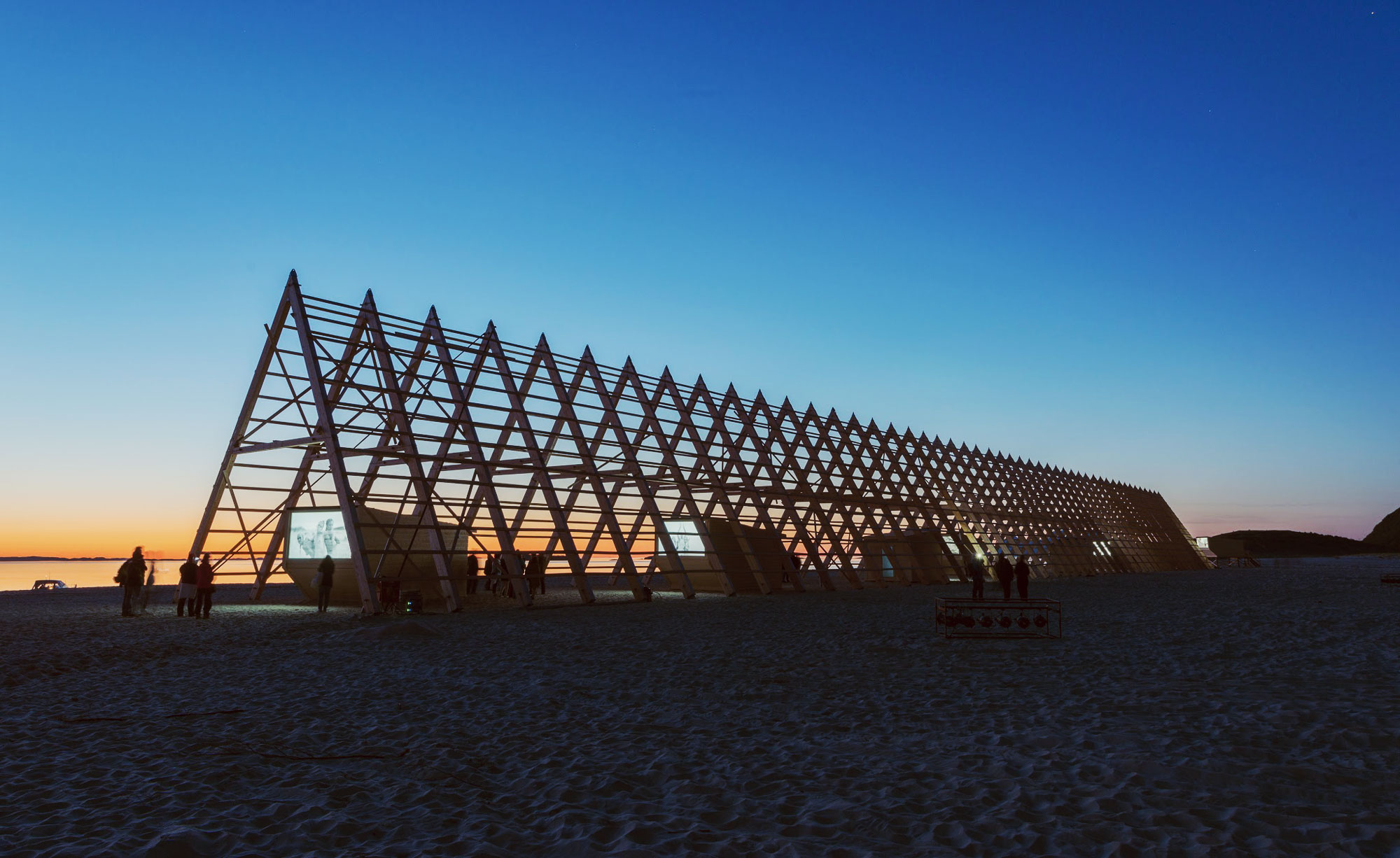
Crowds of visitors explore Fudong’s film installation during the opening night.
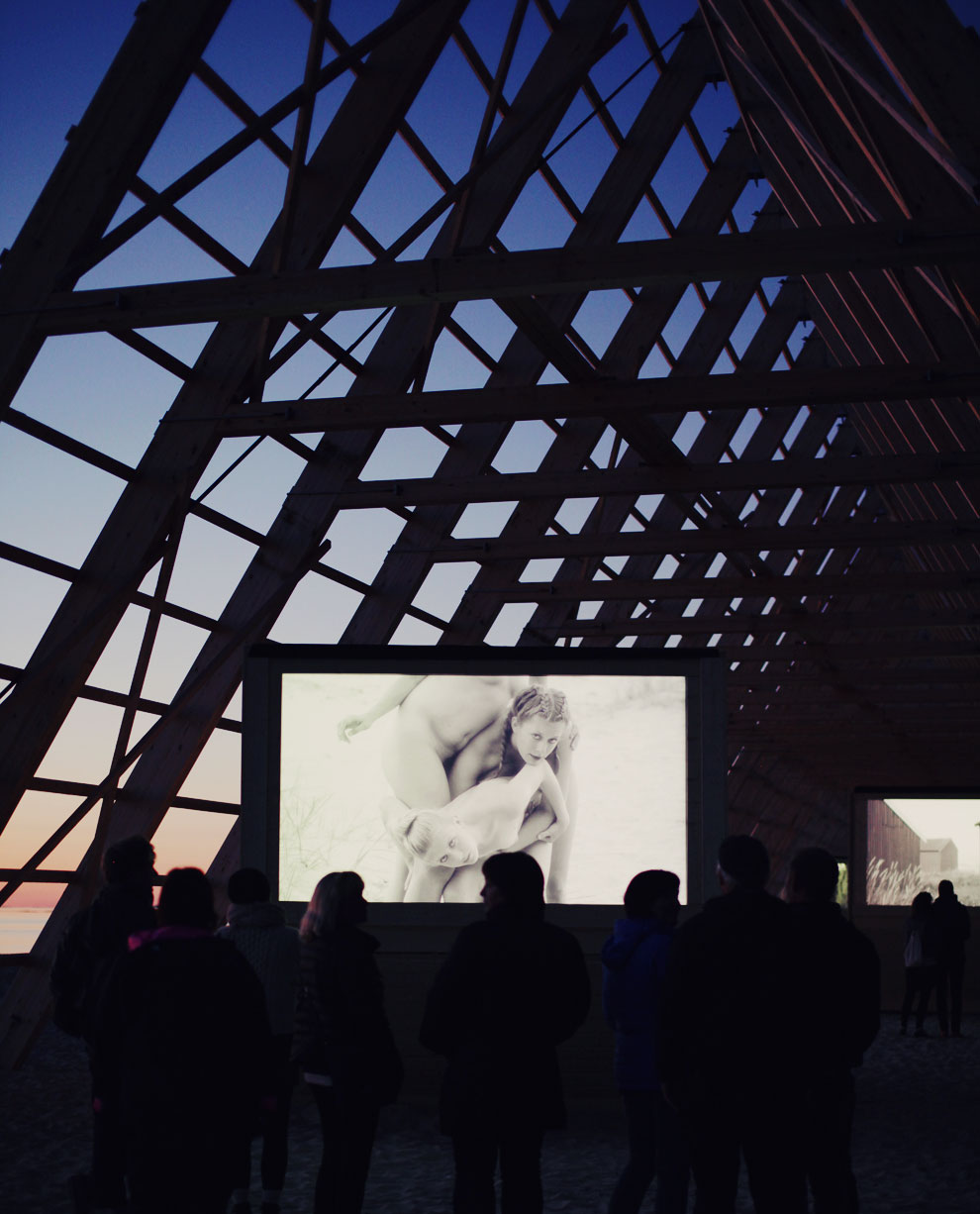
The artist filmed on the beaches of Sandhornøya over two weeks, using local dancers as characters in his work.
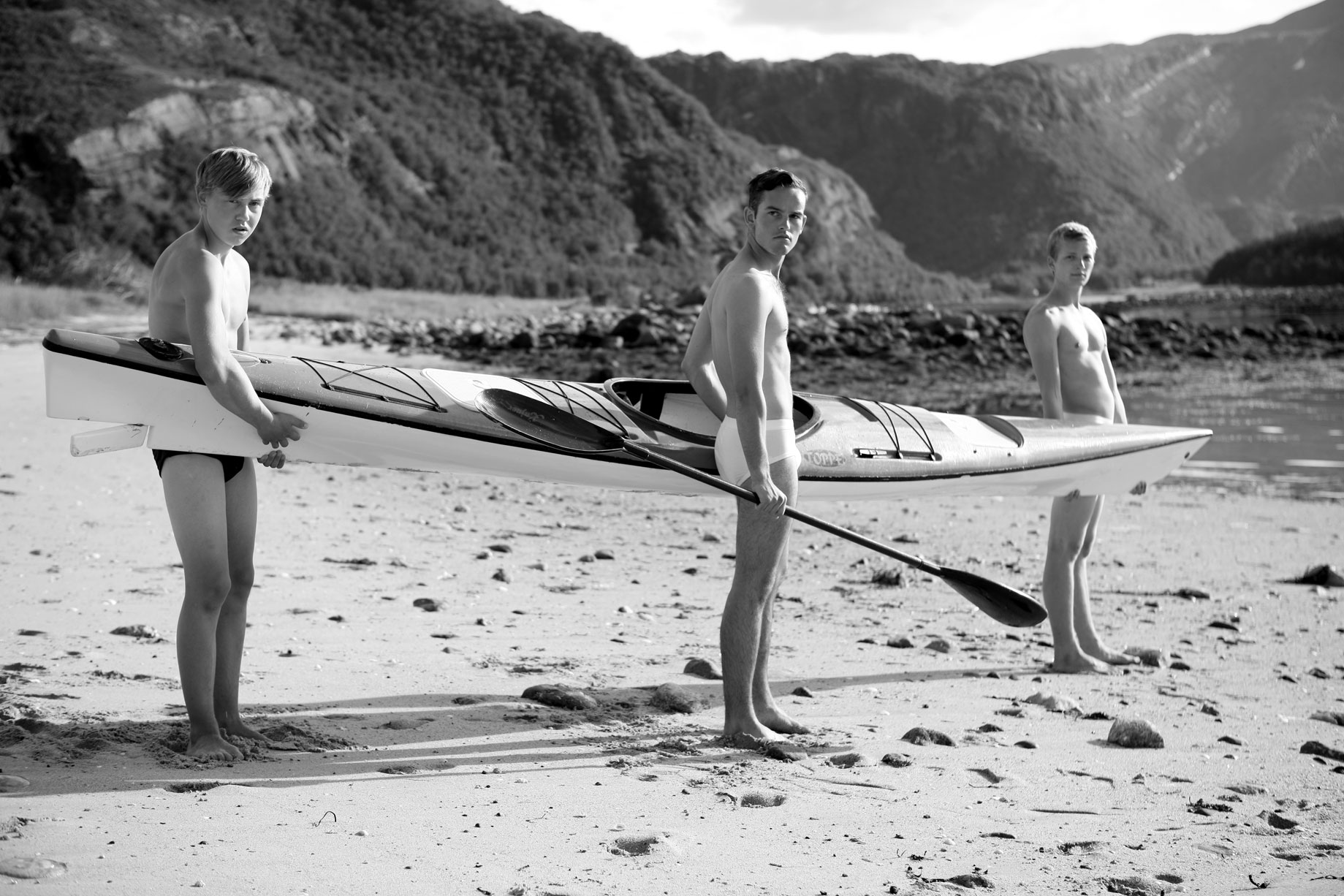
A still from Fudong’s site-specific film installation, entitled 'The Light That I Feel'
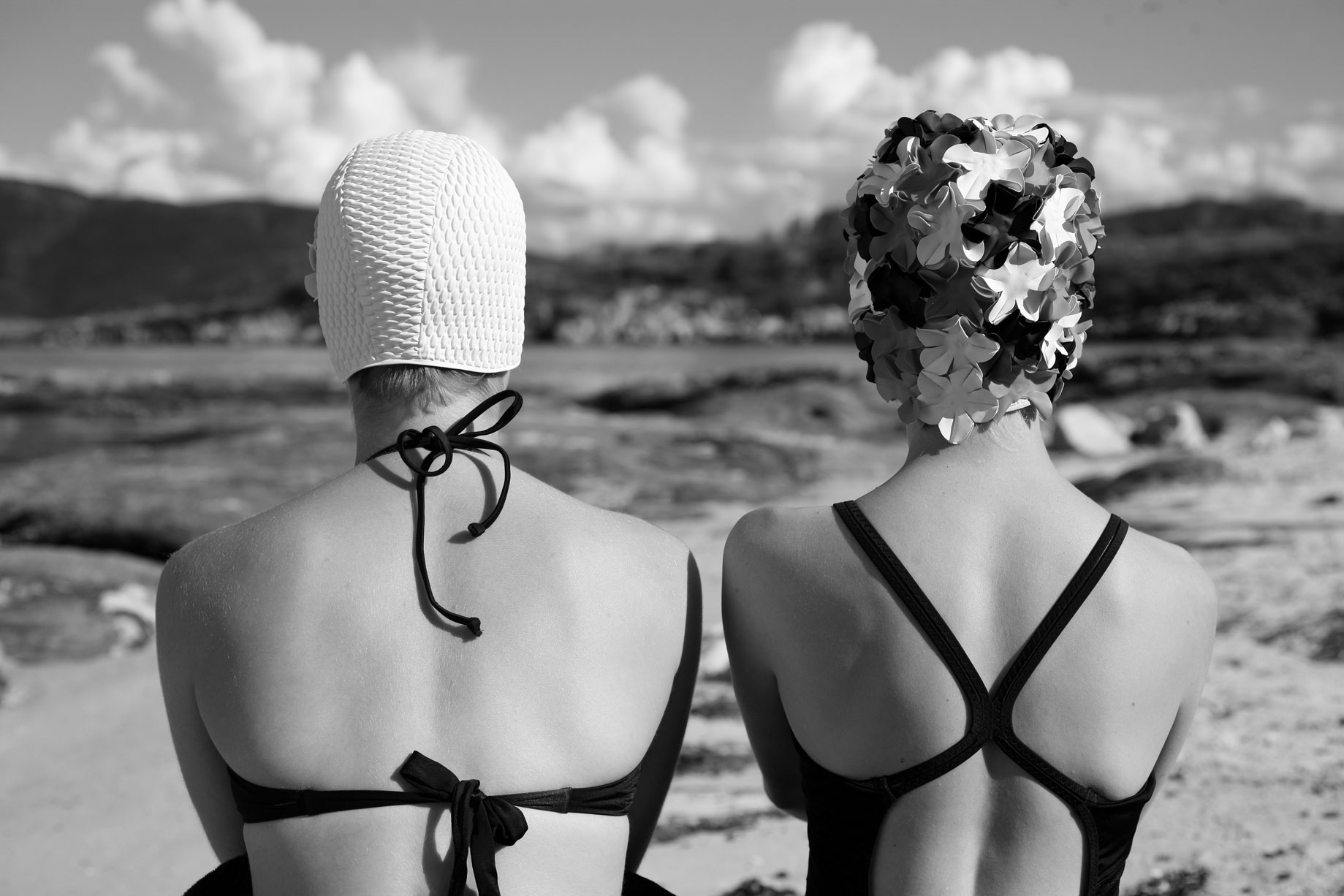
Fudong researched archive photographs of local people from the Nordland country to inspire his narrative
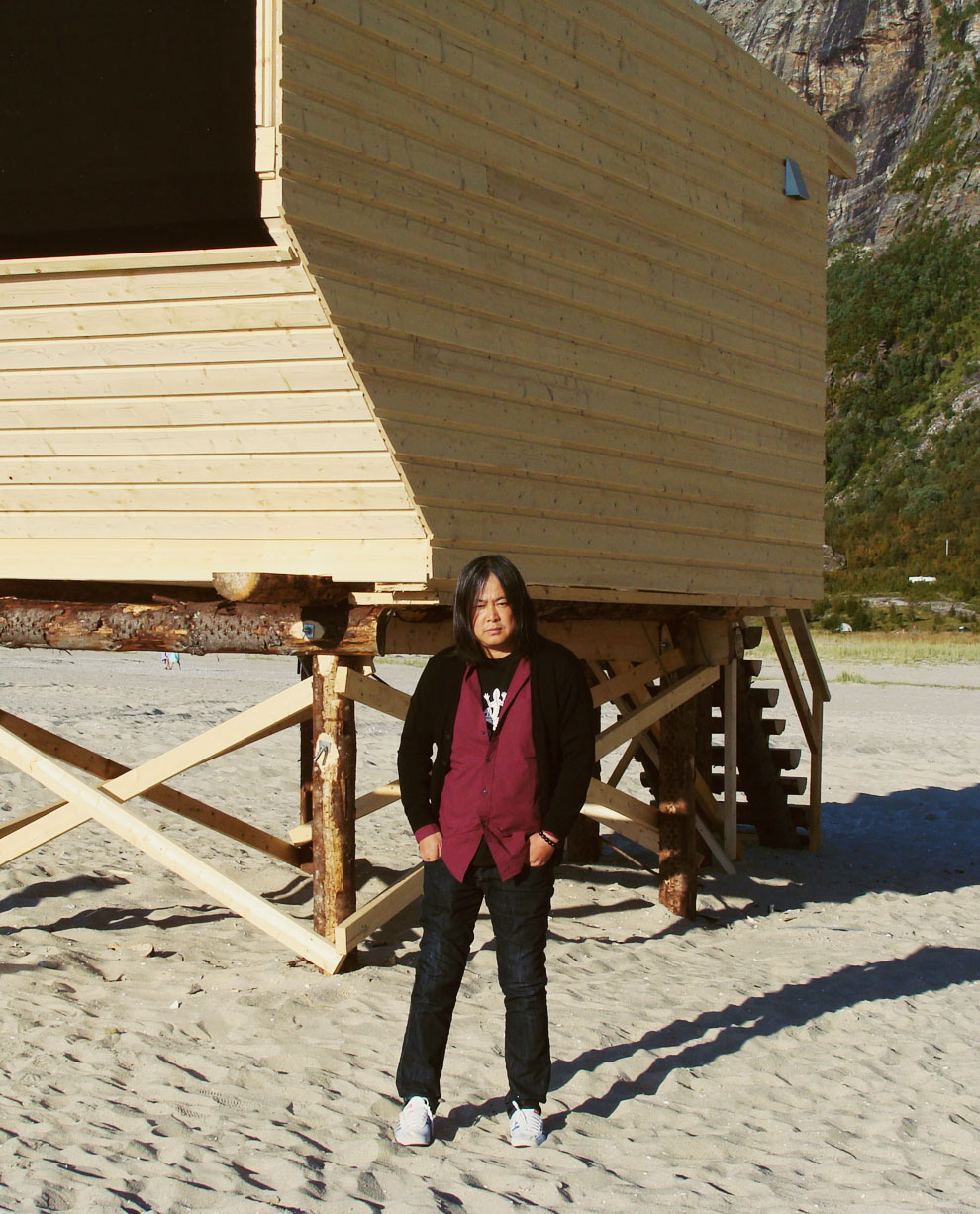
The Chinese artist's hypnotic works eschew sound, instead using landscape to evoke a tale. 'I think about how to tell a narrative by using not people speaking so much, but how the wind tells a narrative, or how trees tell a narrative,' he says. 'It's a feeling of yesterday, but it's actually tomorrow.'
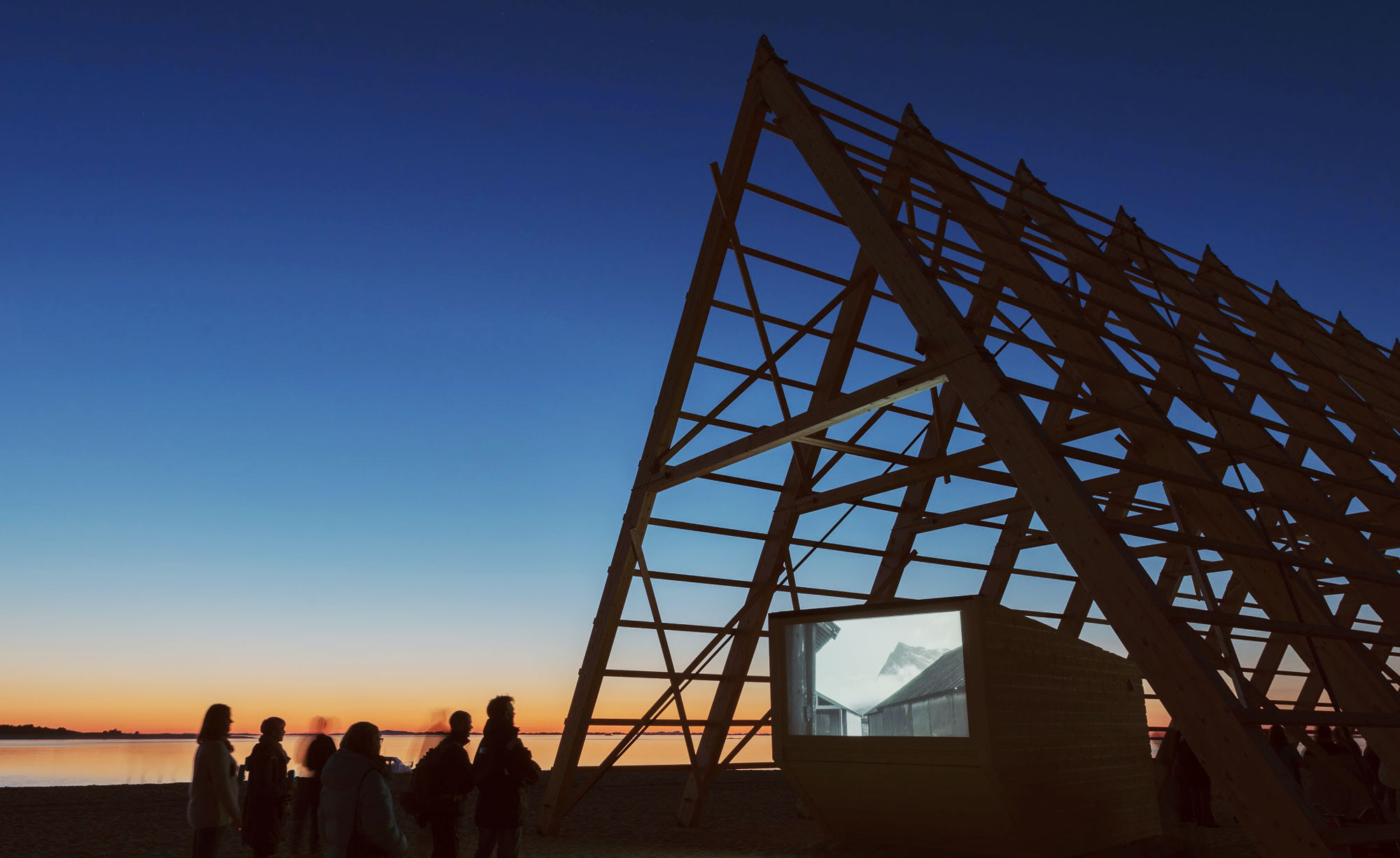
Fudong’s grand, slow and poetic cinematic language fits beautifully within the natural Arctic scenery.
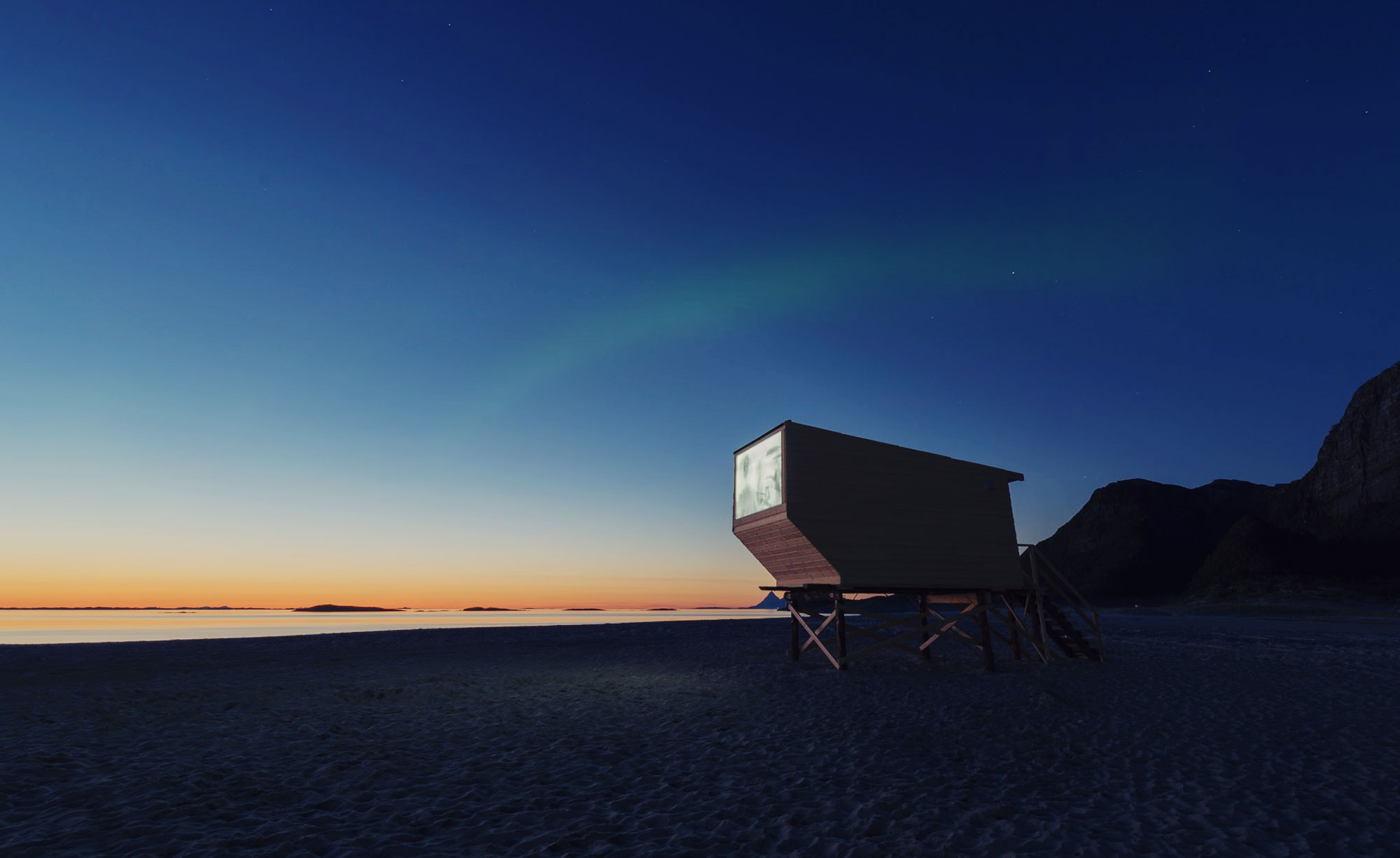
His installation will be particularly powerful in the darker winter months.
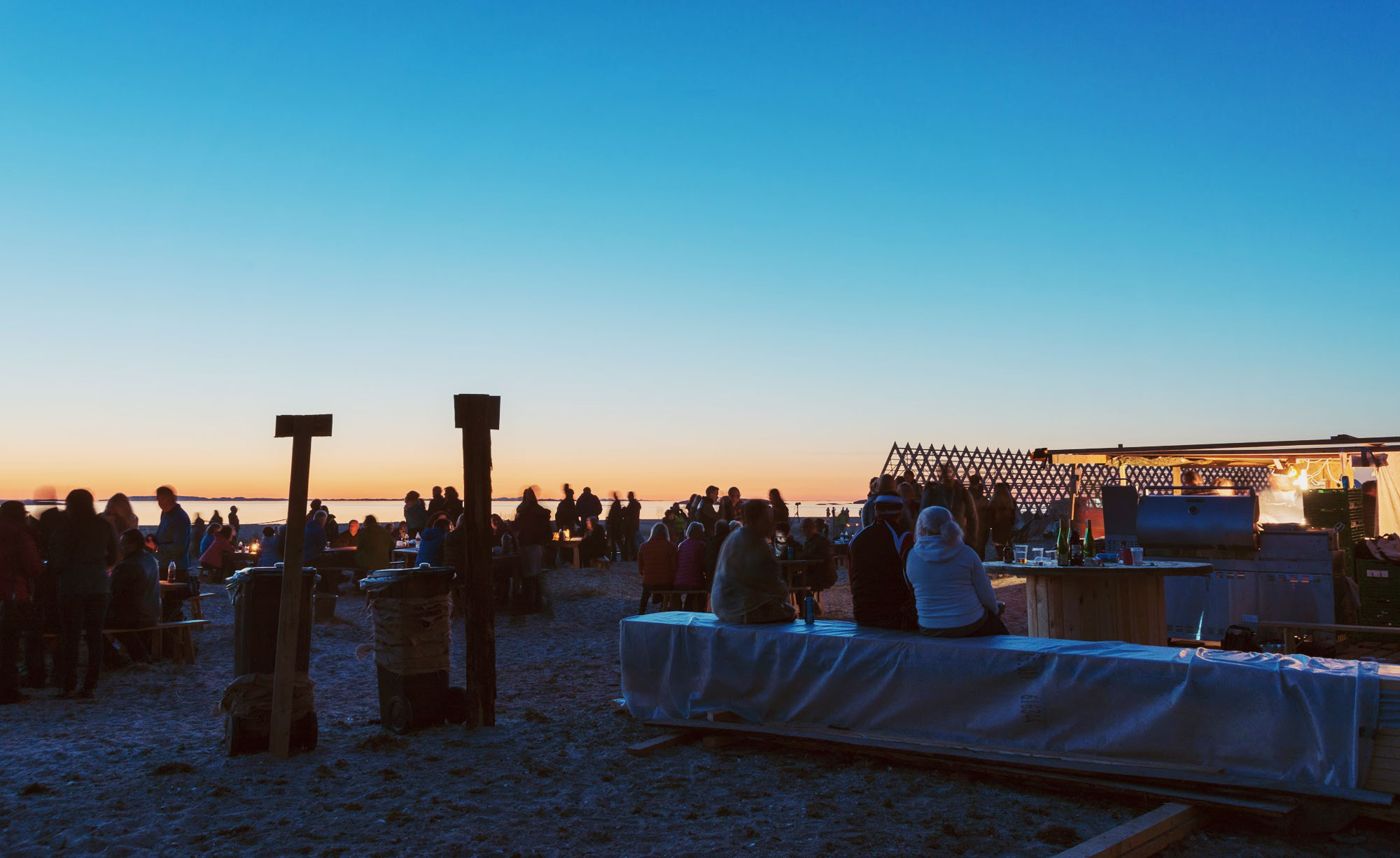
Visitors take in the sunset outside of the second of Rintala Eggertsson's structure, the Gildenhallen, while listening to a music programme, featuring Alabama musician Lonnie Holley, and Norwegians finest, the Arctic Symphonic Orchestra, Biosphere and Slagr.
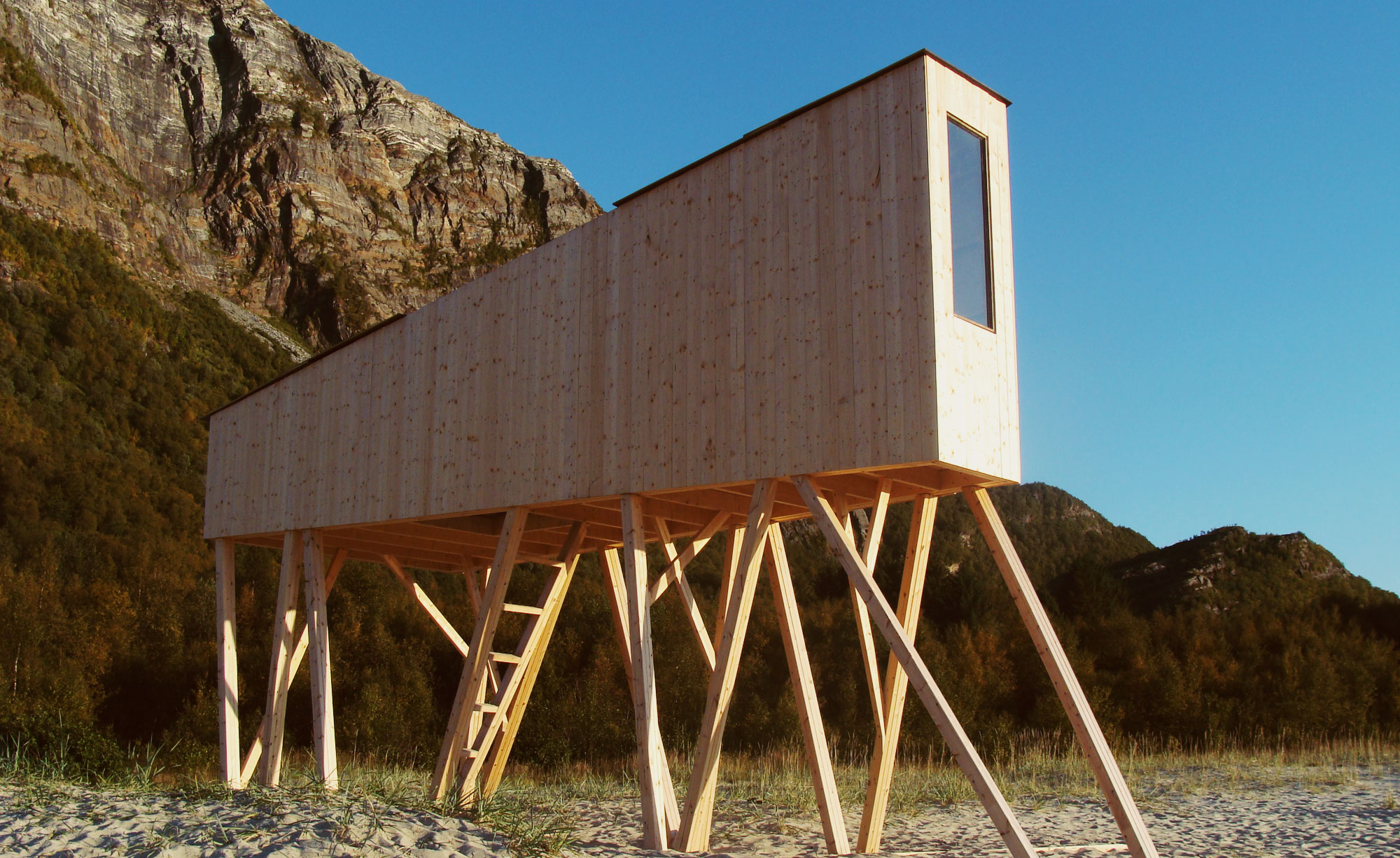
Mogard-Larsen and Nordby have also commissioned international architectural students to create three additional wood structures, siida, which sit on the furthest point of the beach and can accommodate visitors to the festival
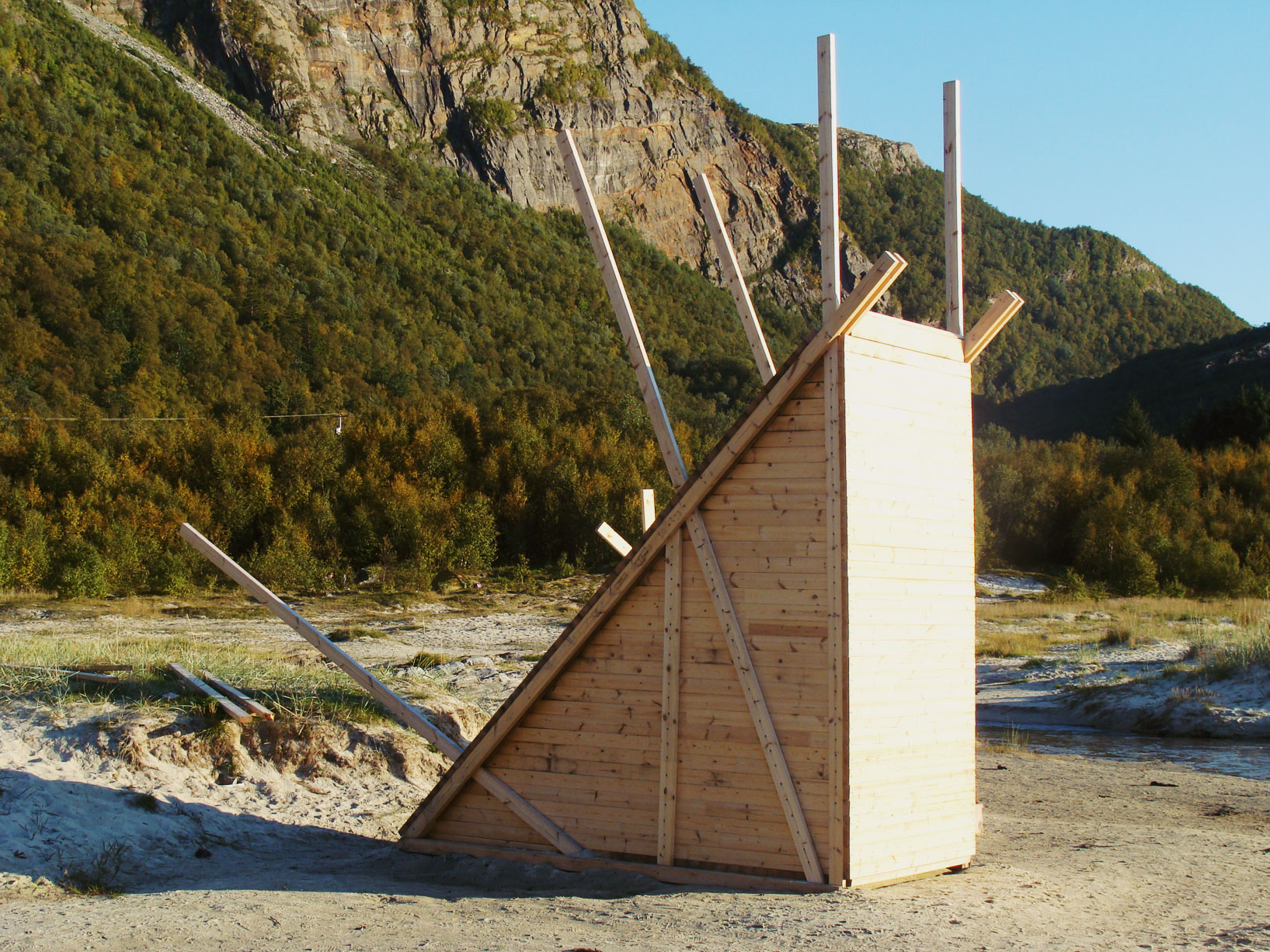
The wood structures, built from locally sourced pine, offer viewports for surveying the scenery
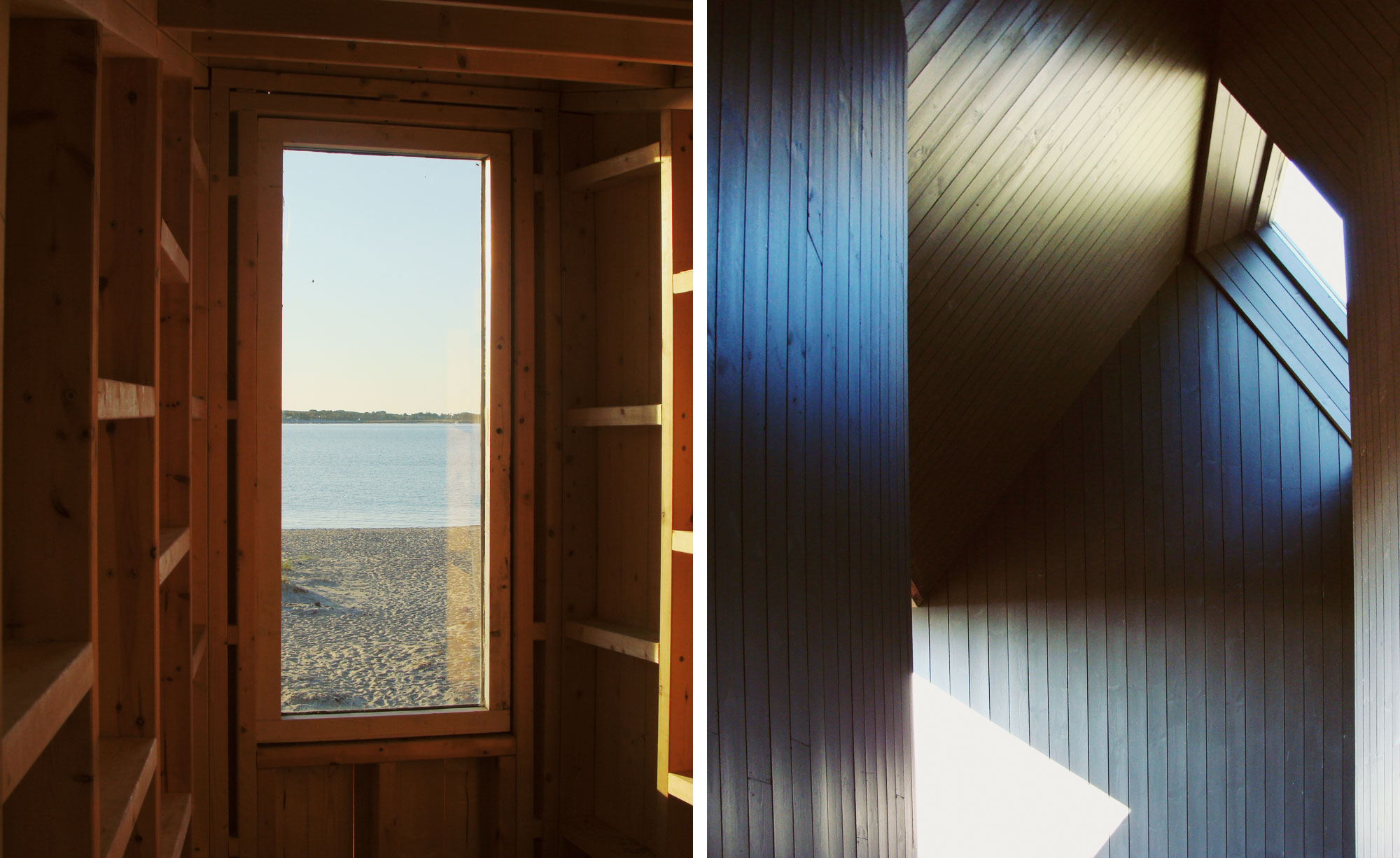
The interiors of the cabins
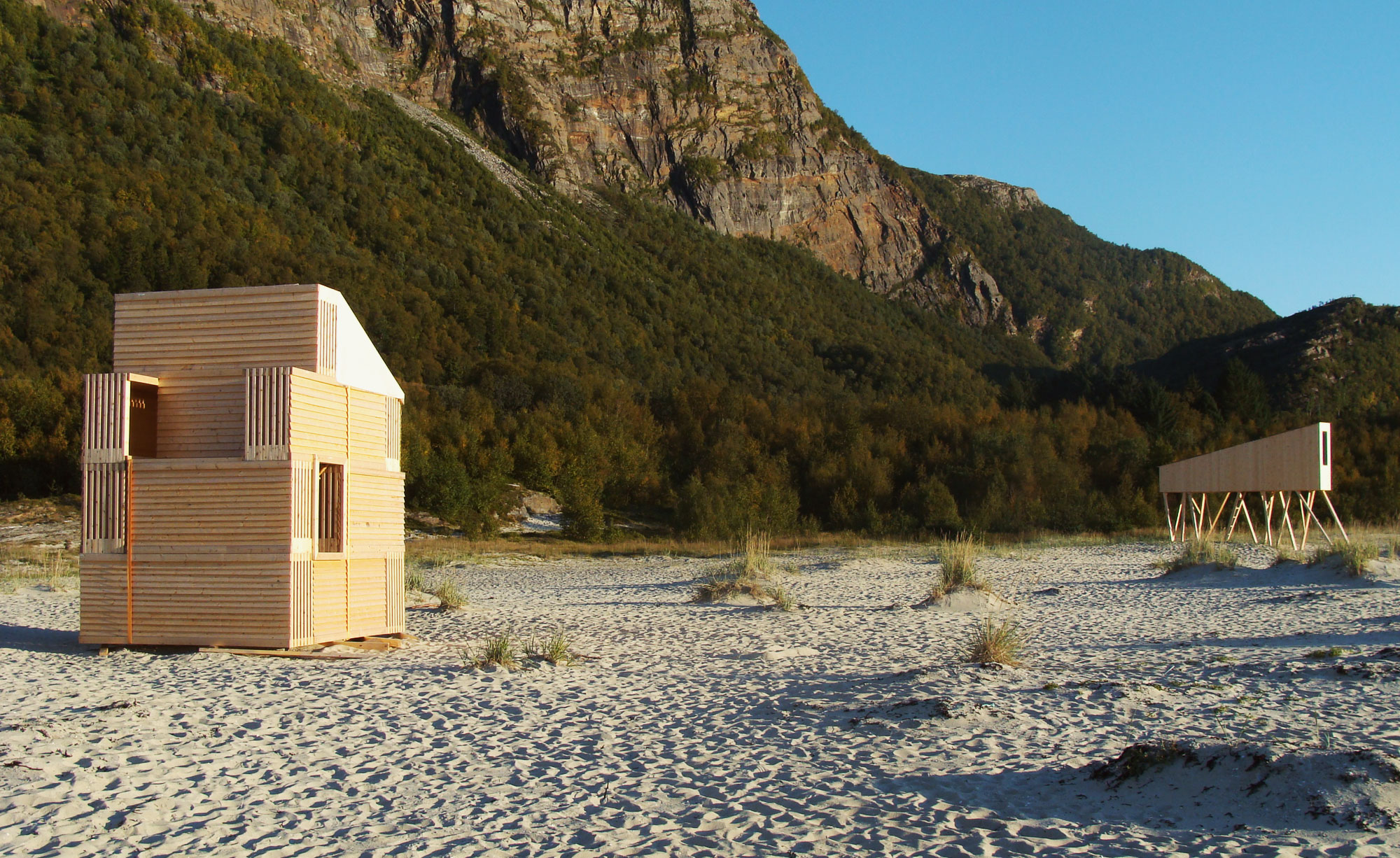
These modern follies can also house visitors to the festival for a night or two under the stars
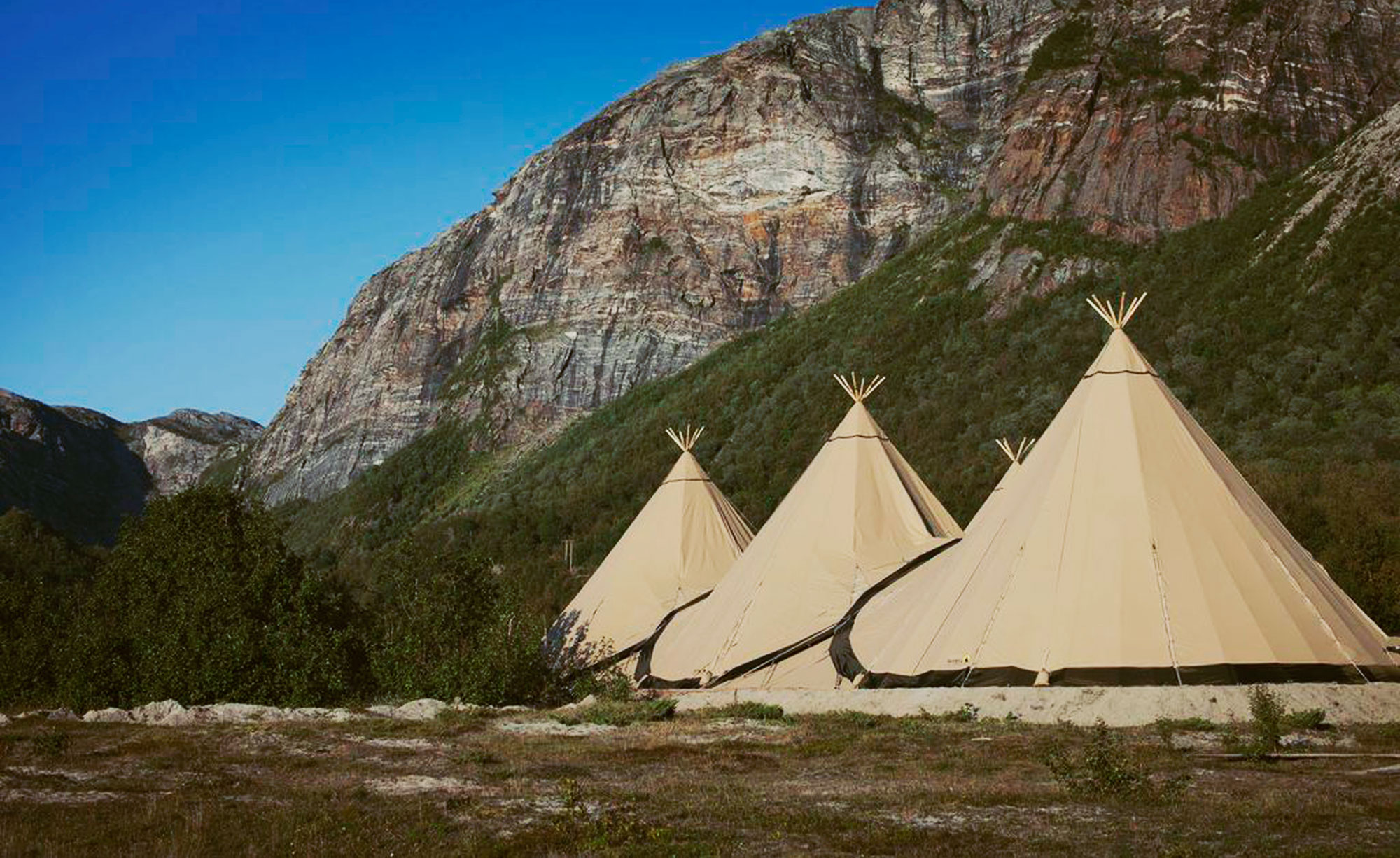
Banquets of seasonal food are served in the large wigwams at the foot of the mountains, overlooking the beaches at Sandhornøya.
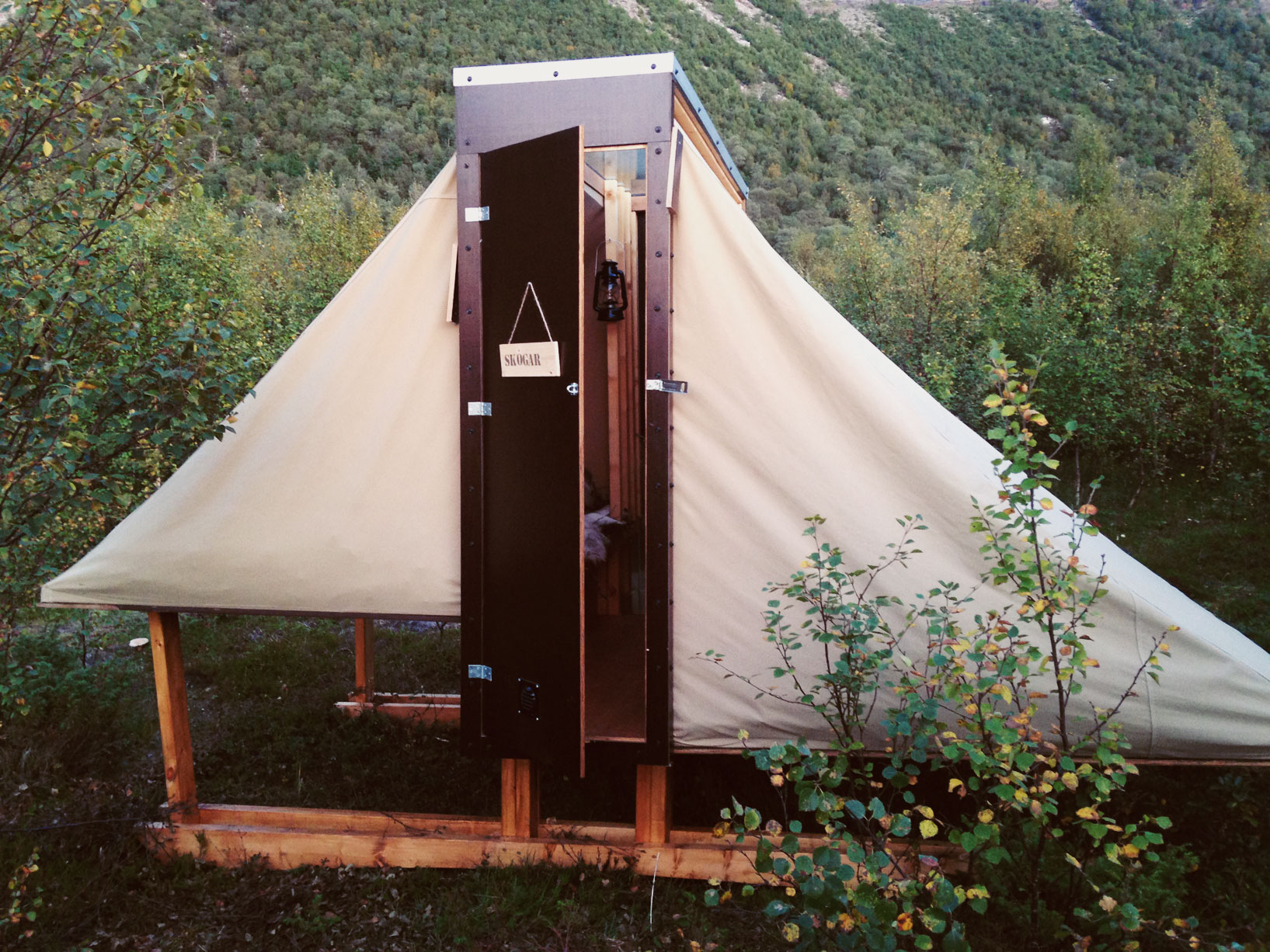
Our bed for the final night. Artist and architect Joar Nango has built a number of shelters for visitors to stay in based on traditional Sami storage houses called njalla. These are kitted out with two beds, with reindeer skins for mattresses, a wood burner and a glass ceiling
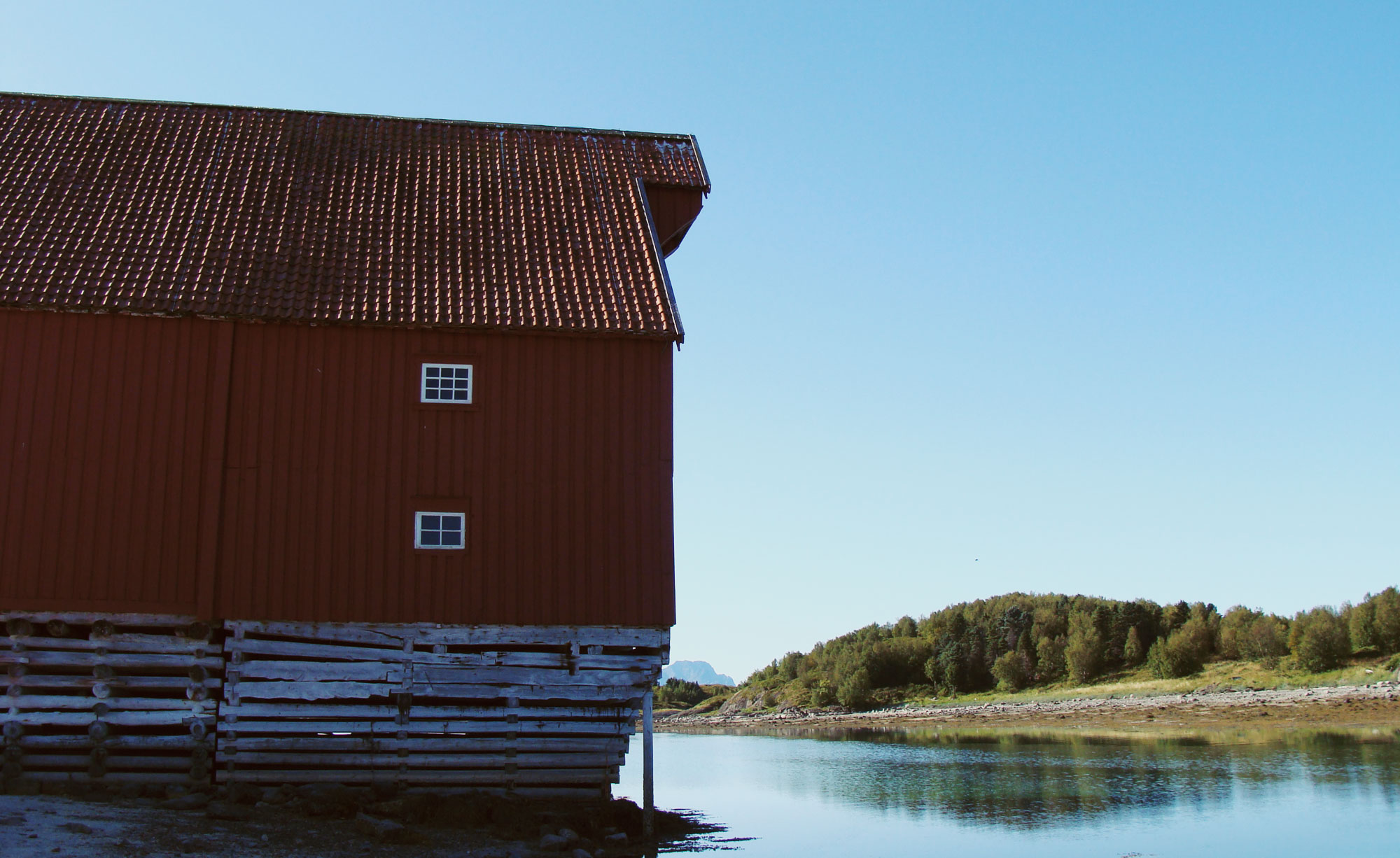
Visitors to the festival have the chance to explore neighbouring islands. Pictured is a traditional 19th century merchant house at one of the wealthiest trading posts in northern Norway, on the island of Kjerringøy
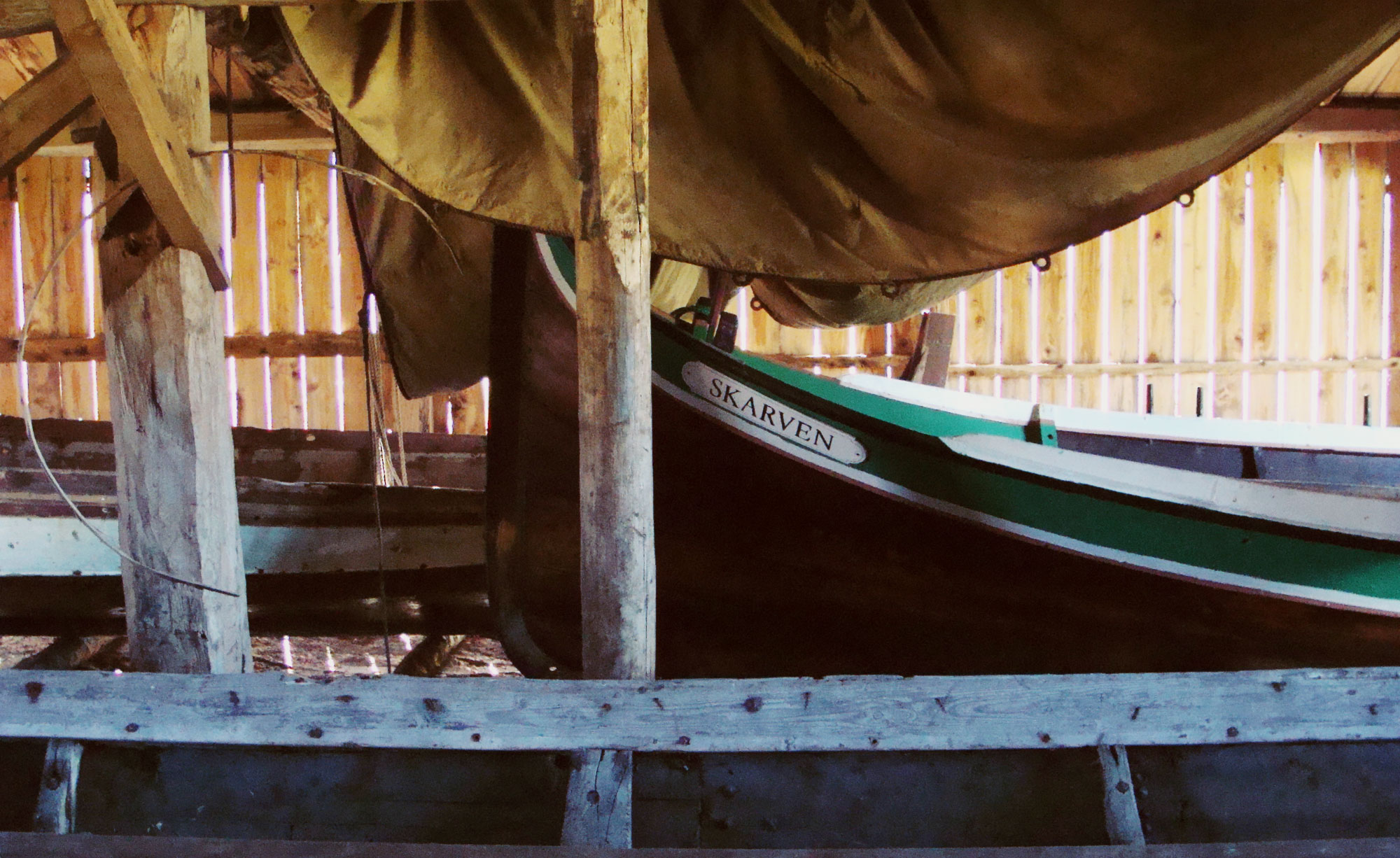
A traditional fishing boat, relating to the old Viking longships, is stored in the boathouse at the Old Trading Post on Kjerringøy, a short boat ride from Sandhornøya
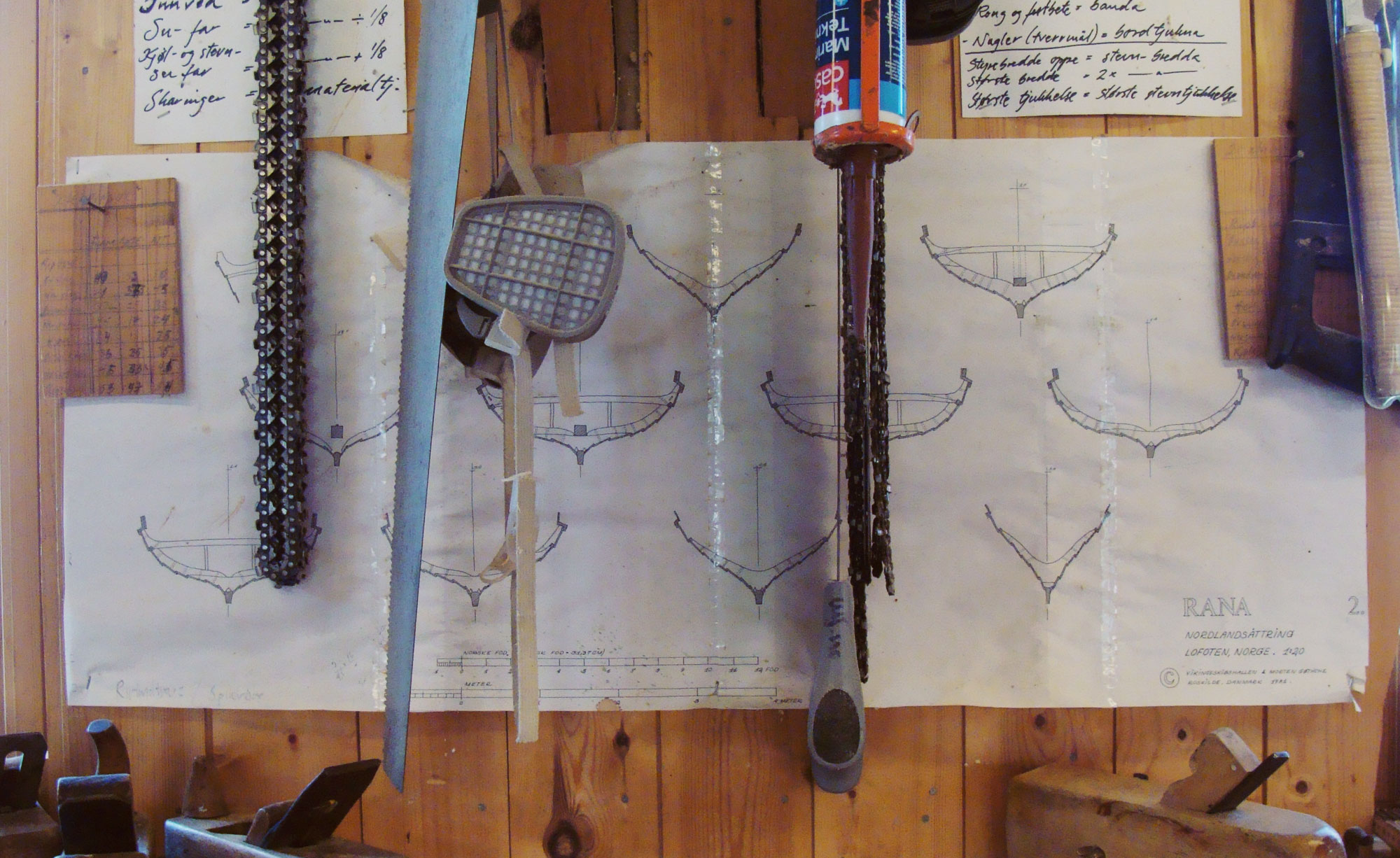
Technical plans hang on the walls of Ulk Mikalsen’s workshop, a traditional builder of Nordland boats
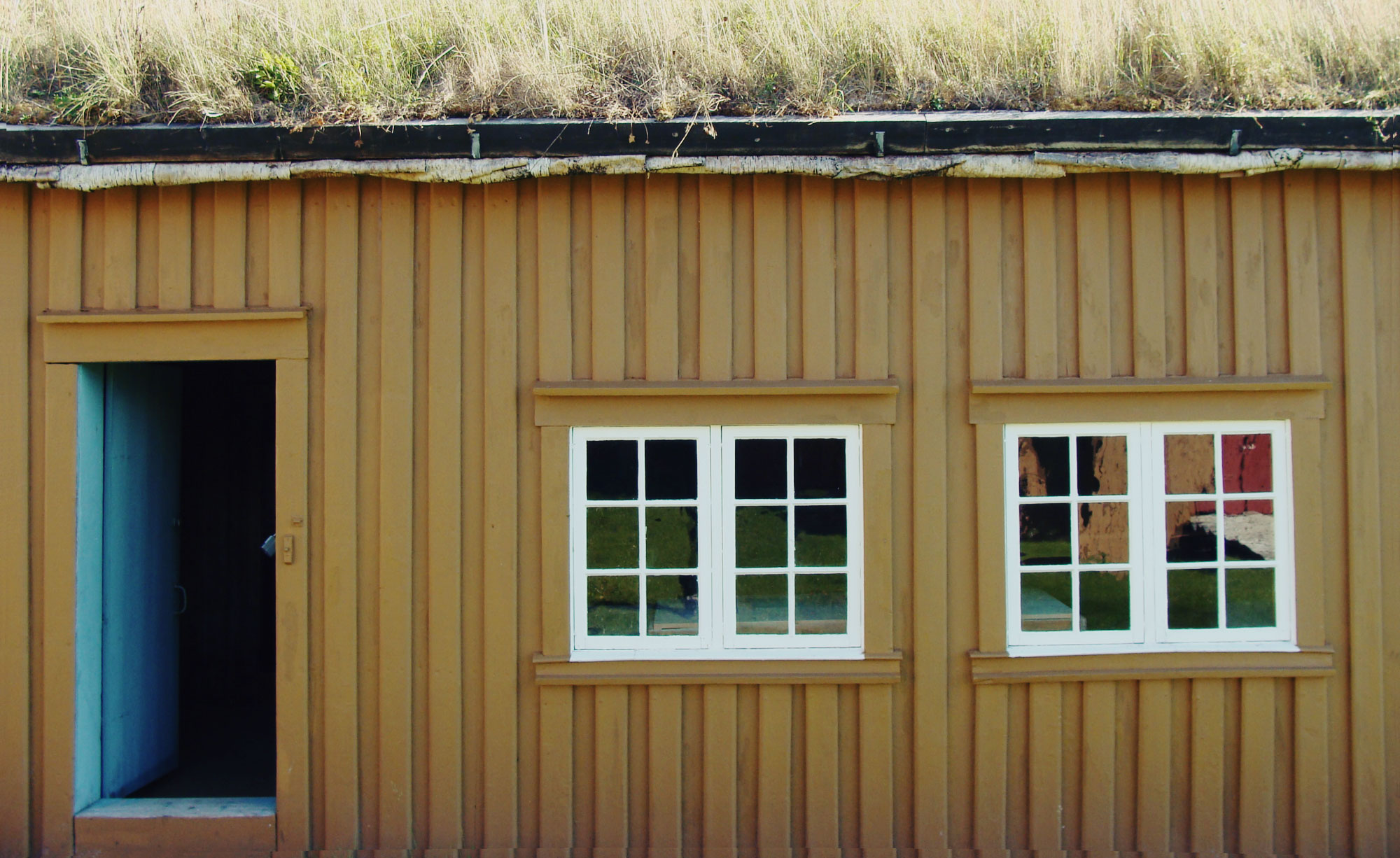
The merchant houses trade great numbers of fish between Nordland and Bergen
Receive our daily digest of inspiration, escapism and design stories from around the world direct to your inbox.
-
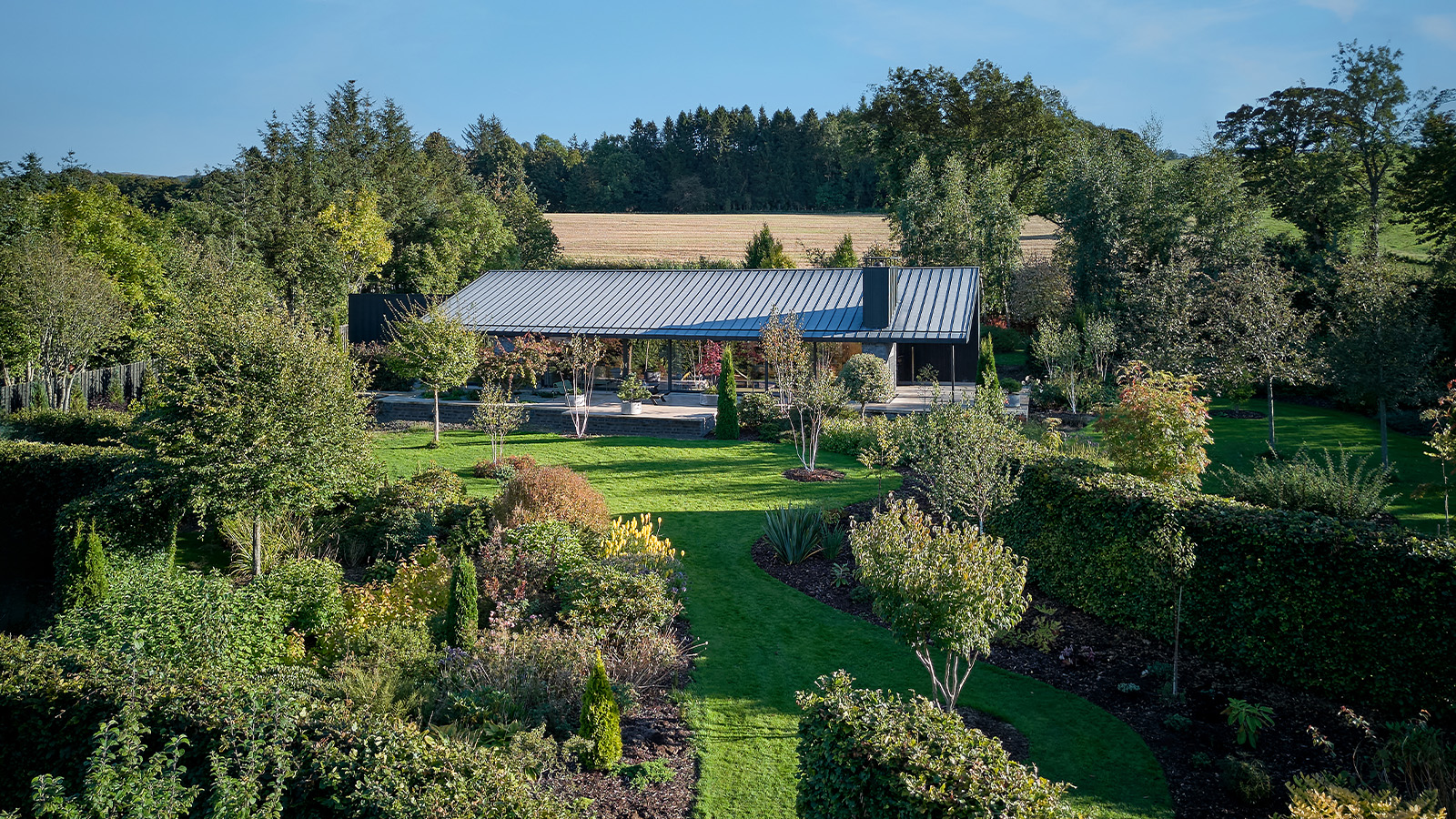 A compact Scottish home is a 'sunny place,' nestled into its thriving orchard setting
A compact Scottish home is a 'sunny place,' nestled into its thriving orchard settingGrianan (Gaelic for 'sunny place') is a single-storey Scottish home by Cameron Webster Architects set in rural Stirlingshire
-
 7 colours that will define 2026, from rich gold to glacier blue
7 colours that will define 2026, from rich gold to glacier blueThese moody hues, versatile neutrals and vivid shades will shape the new year, according to trend forecasters
-
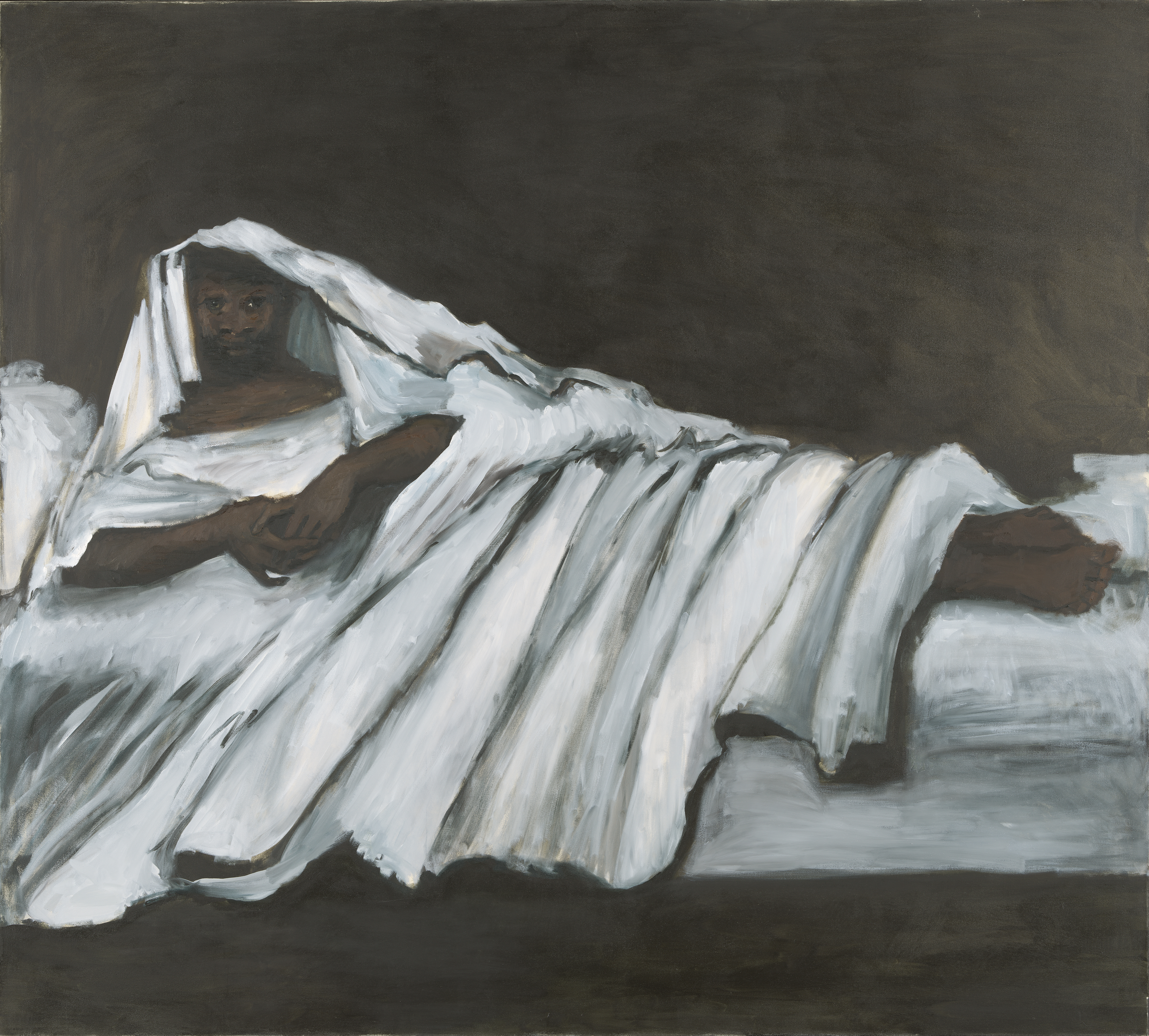 In Norway, discover 1000 years of Queer expression in Islamic Art
In Norway, discover 1000 years of Queer expression in Islamic Art'Deviant Ornaments' at the National Museum of Norway examines the far-reaching history of Queer art
-
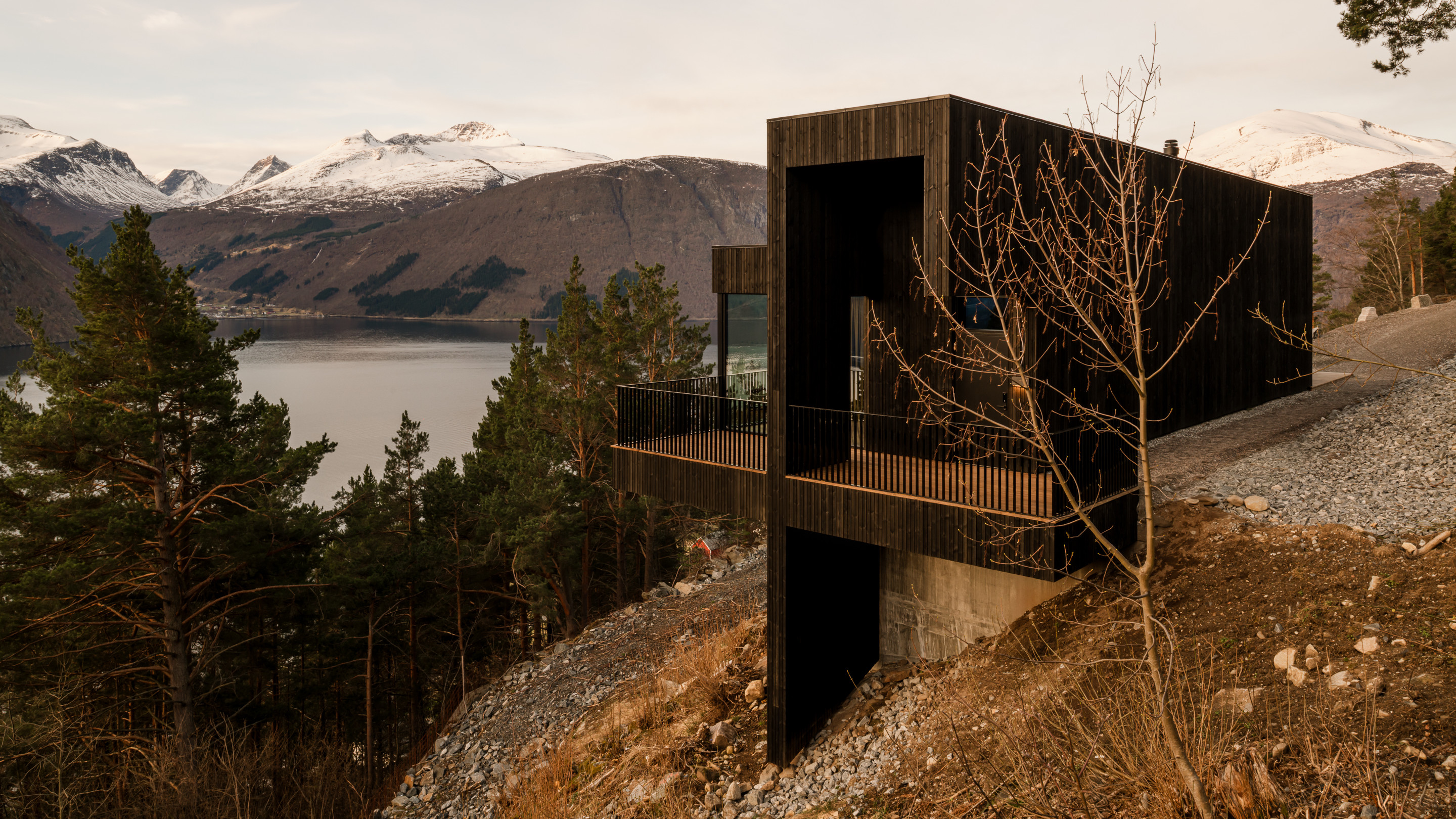 A holiday house on a Norwegian fjord drinks in spectacular views
A holiday house on a Norwegian fjord drinks in spectacular viewsAn elegant and modest holiday home on a fjord on Norway’s western coast works with a steep site and far-reaching vistas
-
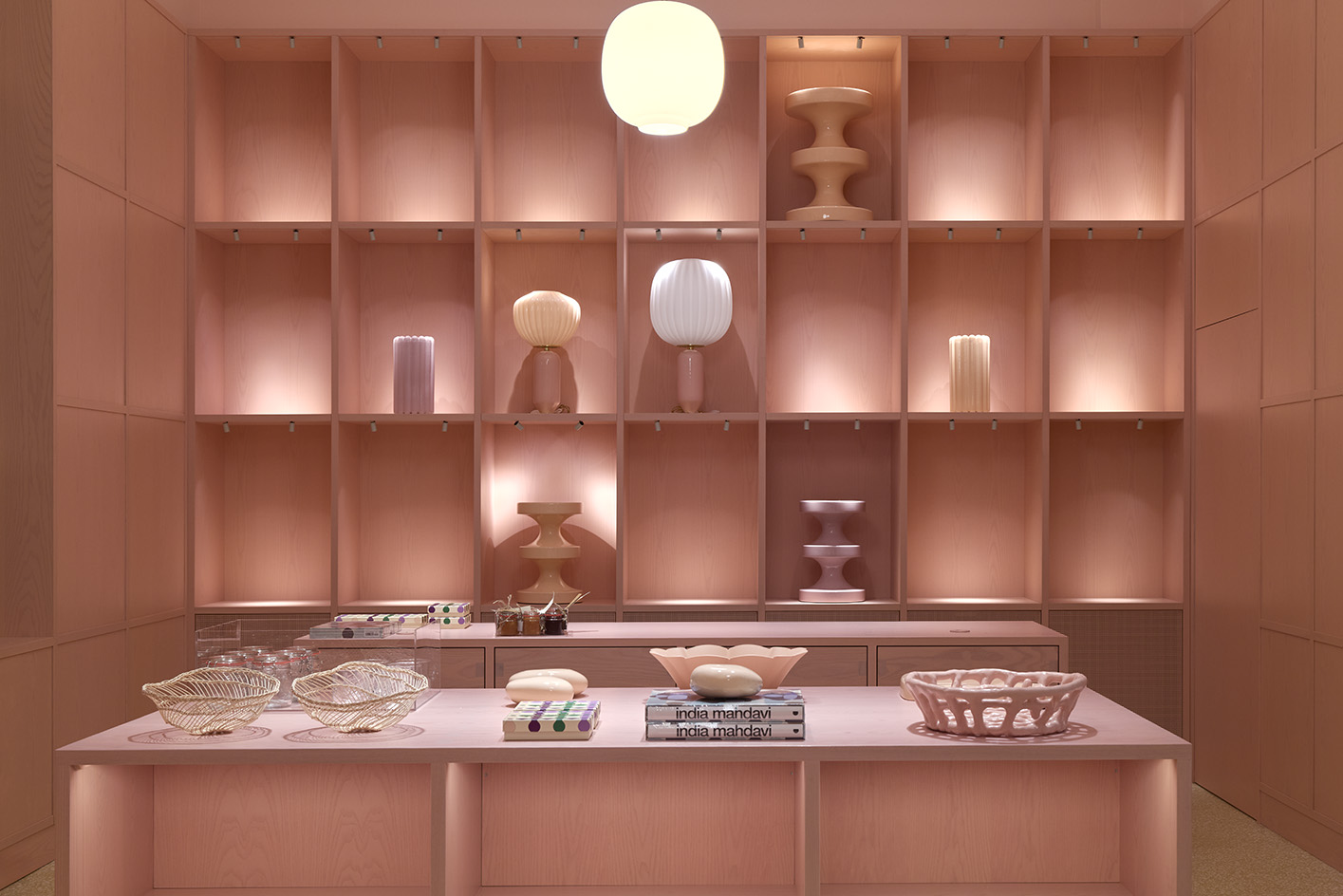 PoMo Museum opens its colourful spaces in Trondheim’s art nouveau post office
PoMo Museum opens its colourful spaces in Trondheim’s art nouveau post officePoMo Museum is a new Trondheim art destination, featuring colourful interiors by India Mahdavi in an art nouveau post office heritage building
-
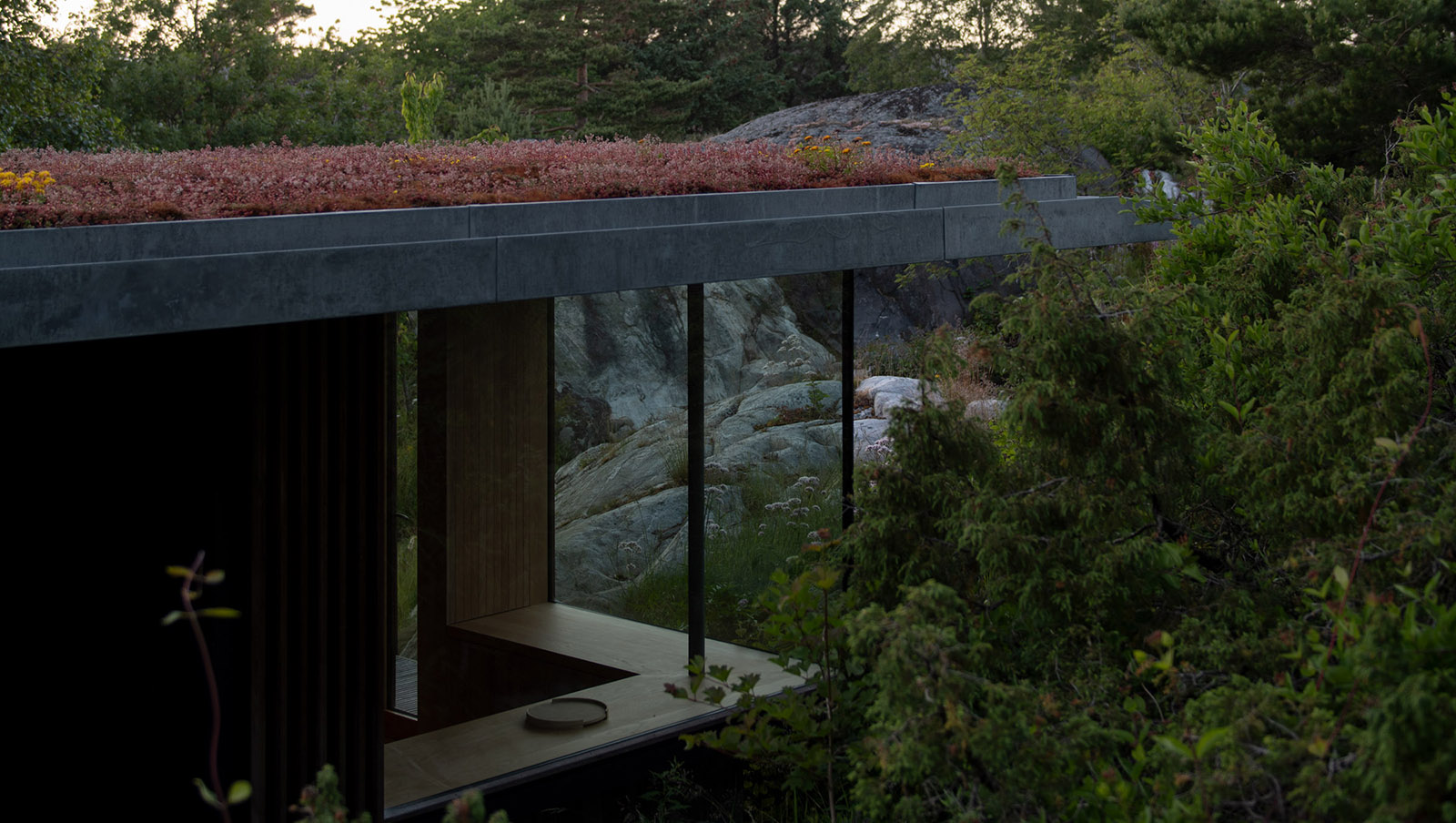 Tour this waterfront Norwegian summer house in pristine nature
Tour this waterfront Norwegian summer house in pristine natureCabin Lillesand by architect, Lund Hagem respects and enhances its natural setting in the country's south
-
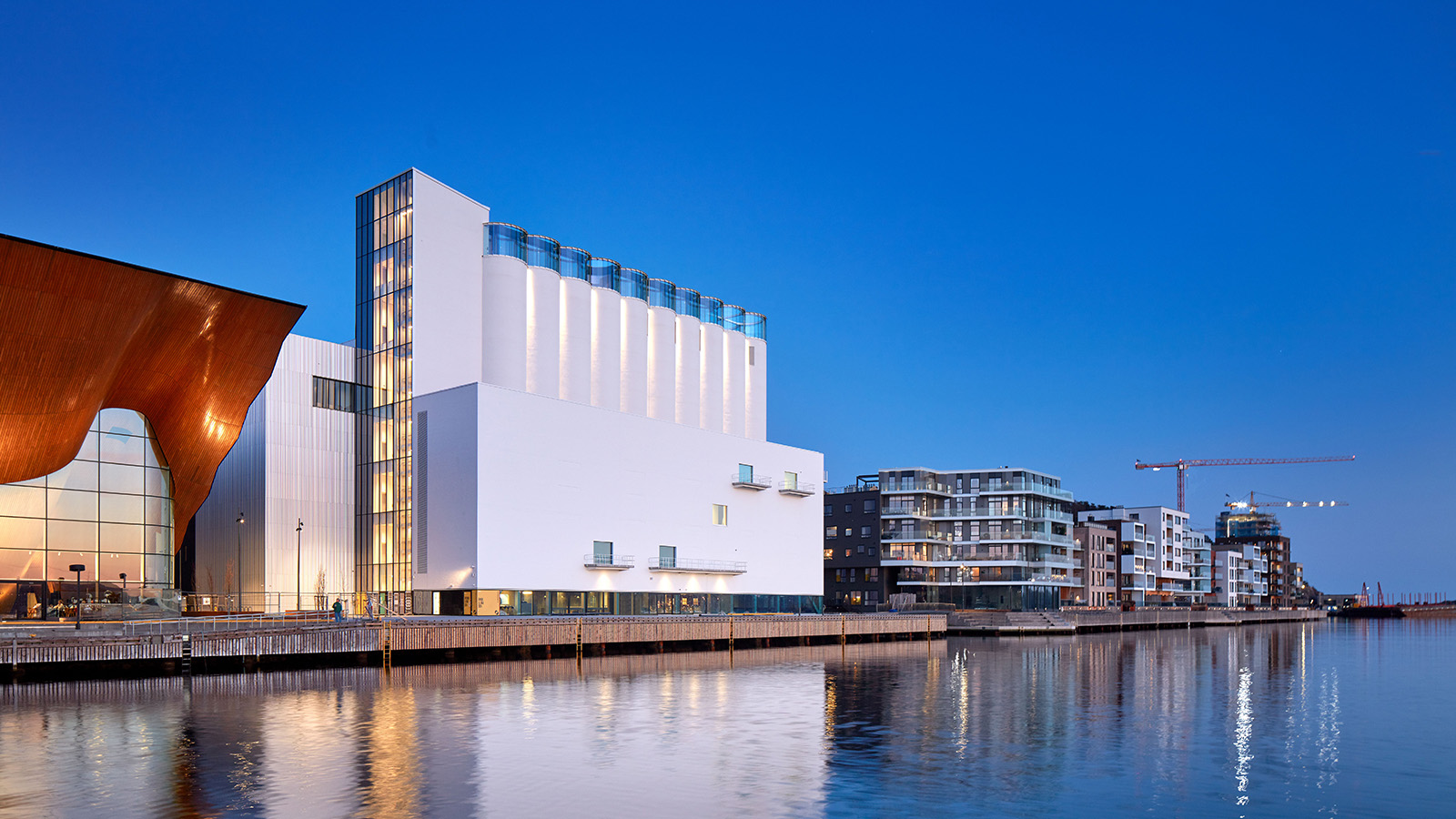 Kunstsilo sees a functionalist grain silo transformed into Norway’s newest art gallery
Kunstsilo sees a functionalist grain silo transformed into Norway’s newest art galleryKunstsilo’s crisp modern design by Mestres Wåge with Spanish firms Mendoza Partida and BAX Studio transforms a listed functionalist grain silo into a sleek art gallery
-
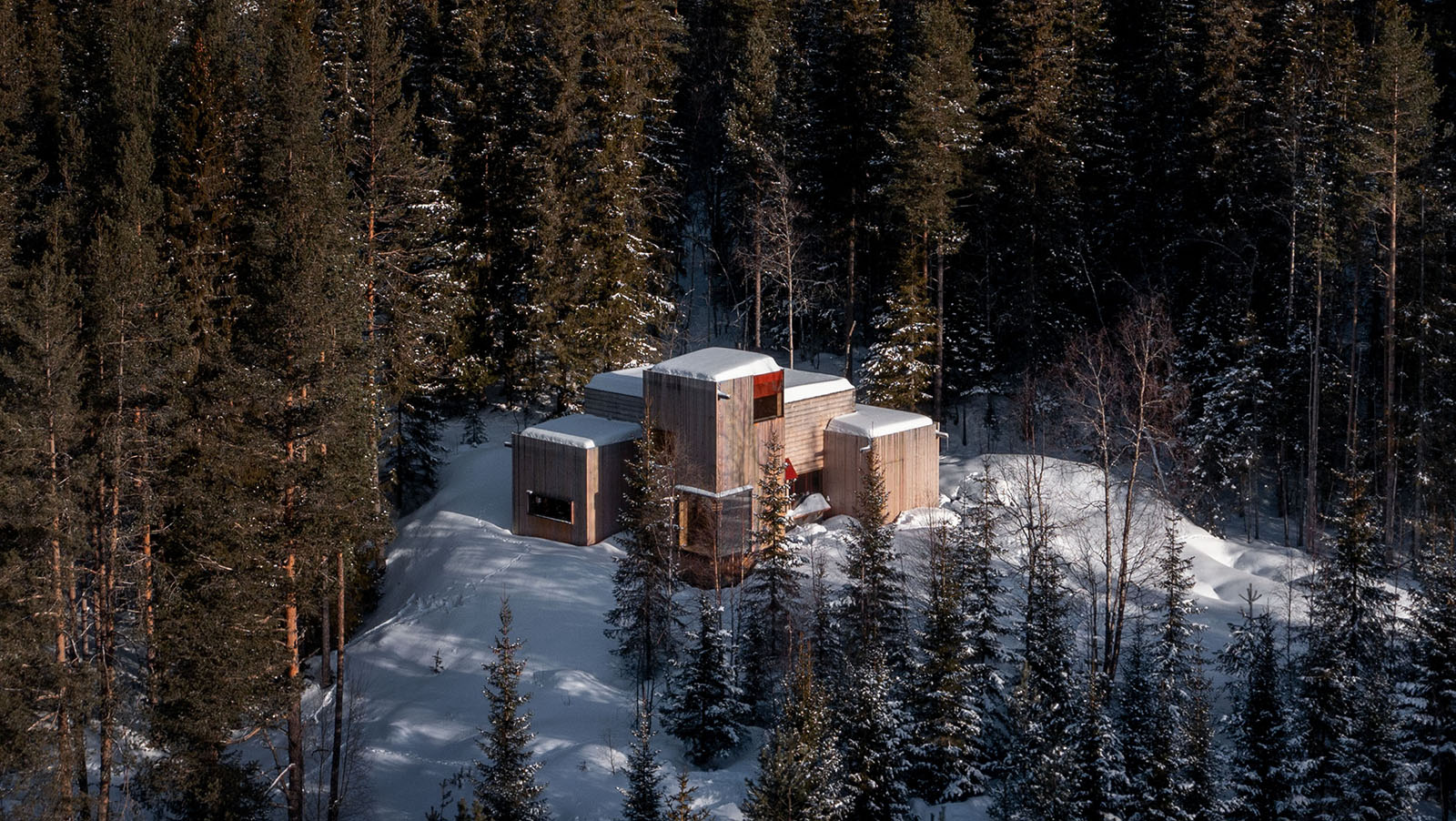 Aarestua Cabin brings old Norwegian traditions into the 21st century
Aarestua Cabin brings old Norwegian traditions into the 21st centuryAarestua Cabin by Gartnerfuglen is a modern retreat with links to historical Norwegian traditions, and respect for its environment
-
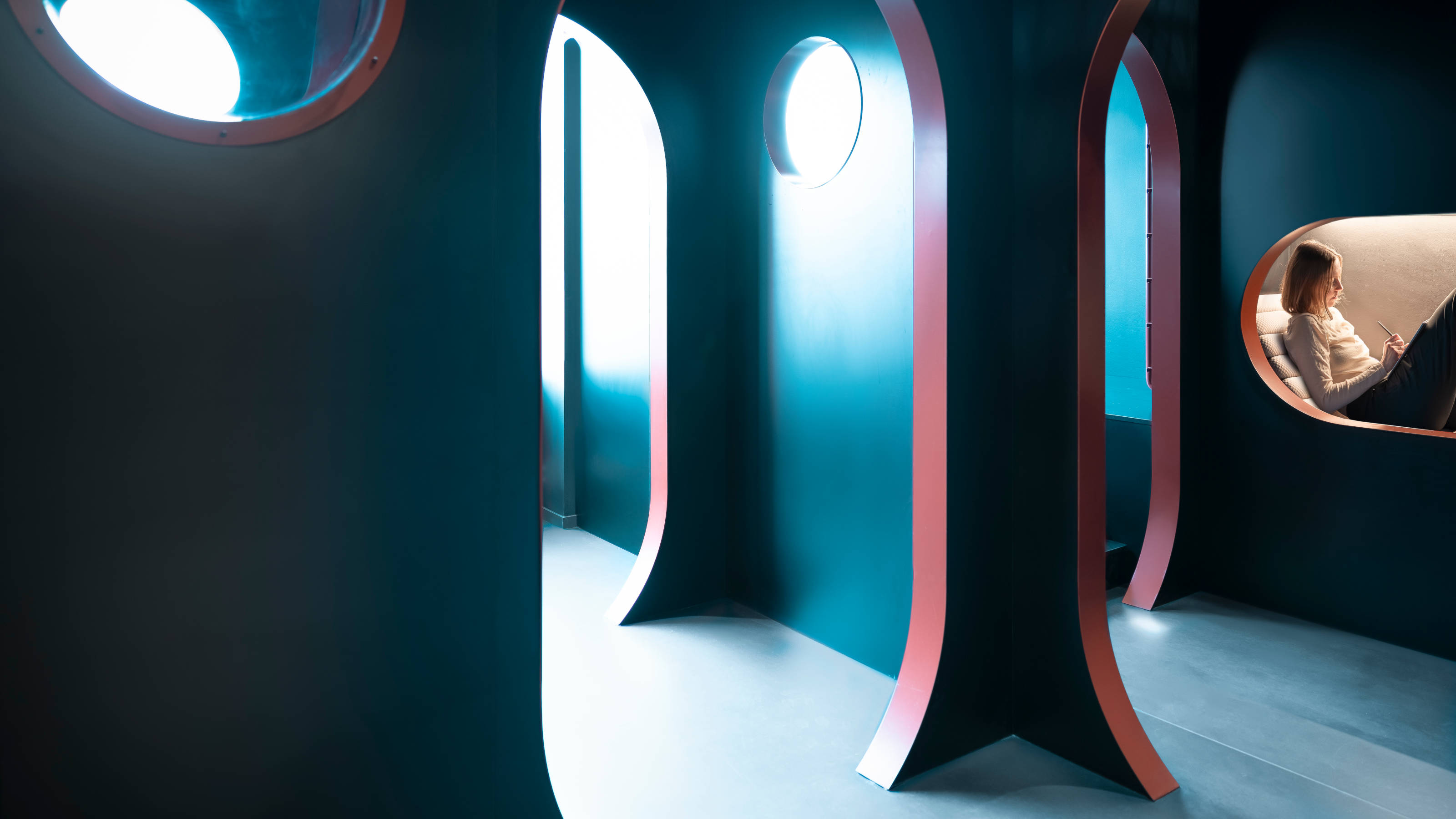 Pioneering tablet maker reMarkable’s Oslo headquarters is a space for ‘better thinking’
Pioneering tablet maker reMarkable’s Oslo headquarters is a space for ‘better thinking’reMarkable’s Oslo head office, featuring areas to retreat, ruminate and collaborate, is a true workspace of the future
-
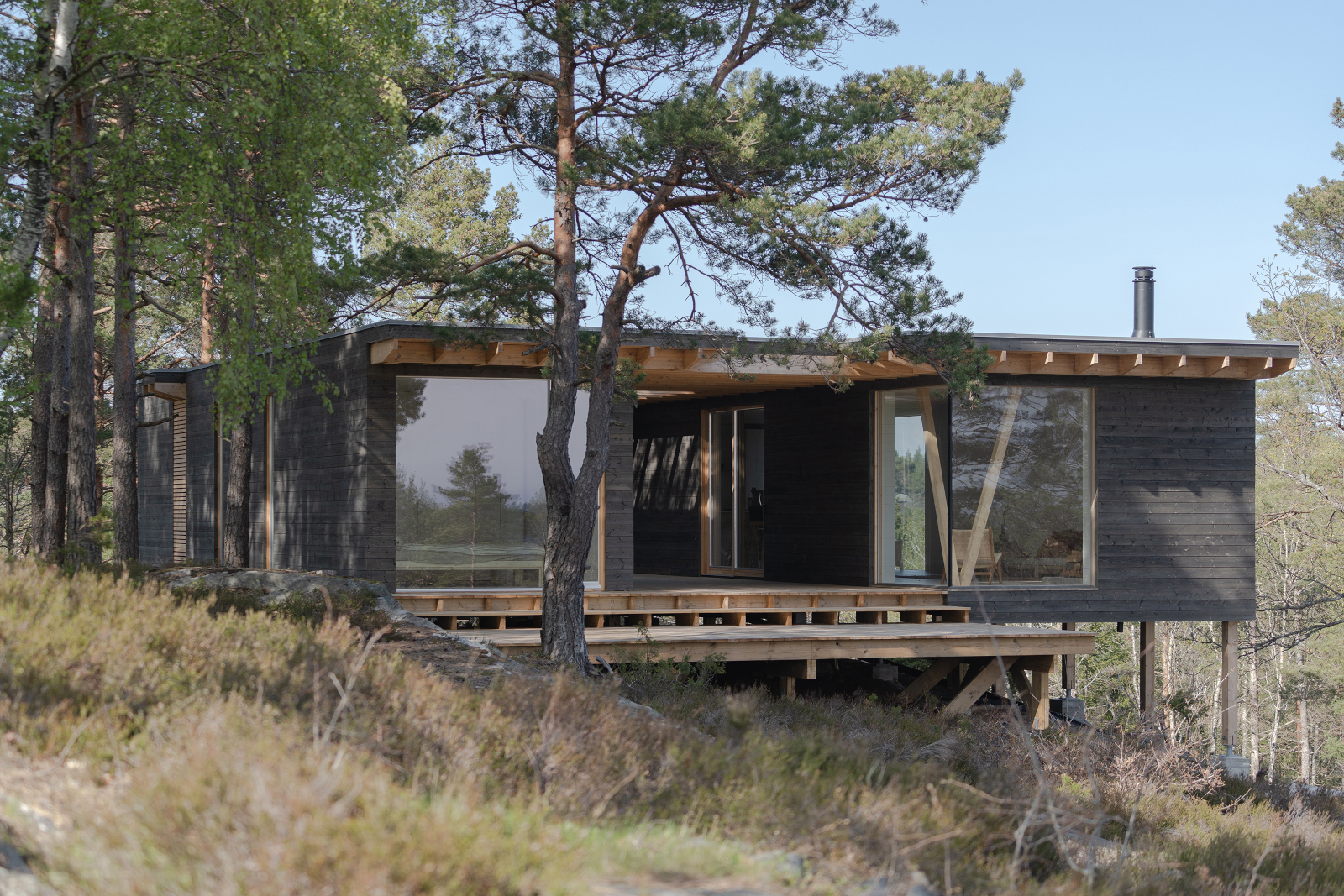 This Norway cabin was designed as a minimalist, coastal escape
This Norway cabin was designed as a minimalist, coastal escapeThis Norway cabin by Erling Berg is made of local timber that frames its scenic Risør views through large openings and outdoor areas, creating a cool summer escape
-
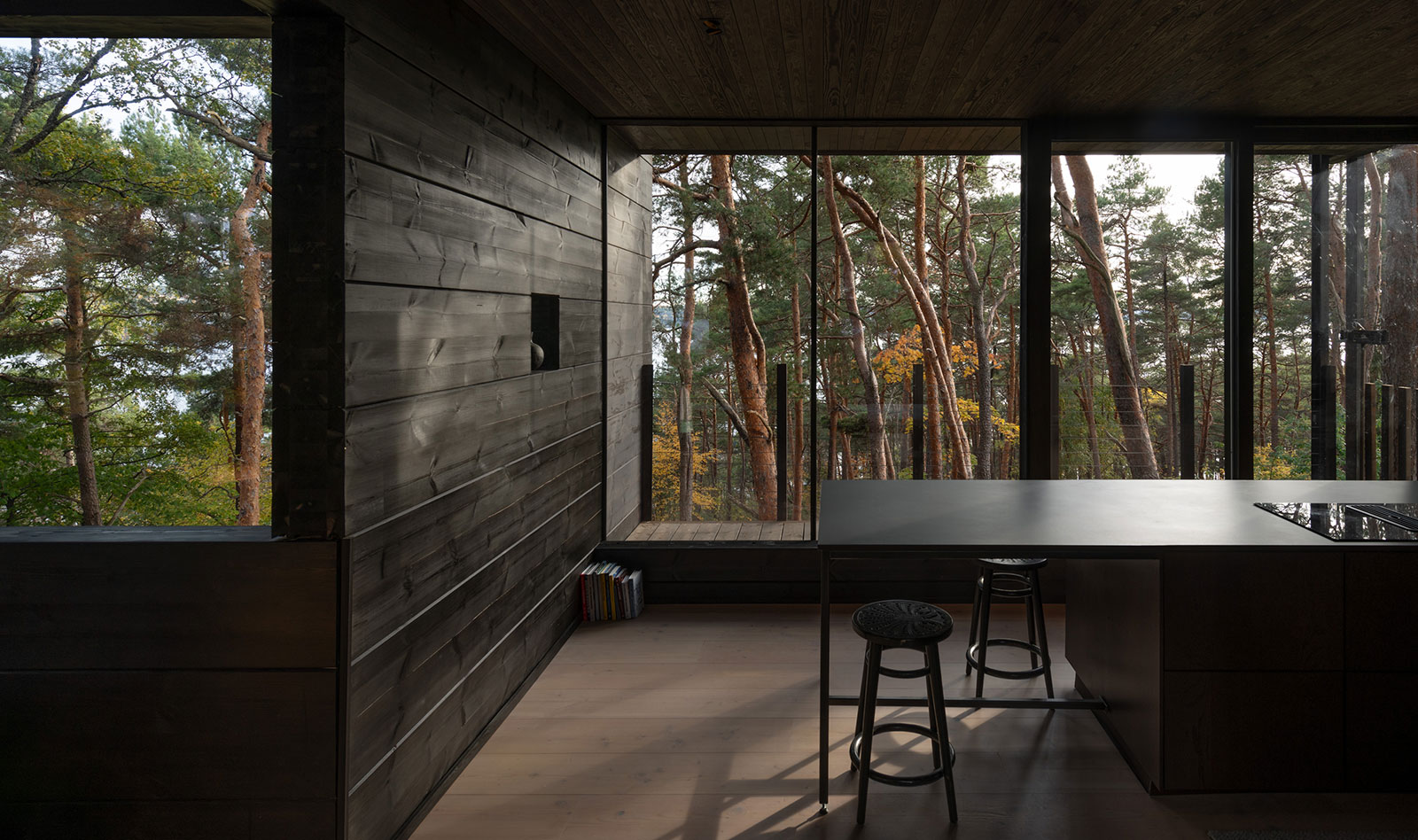 This Oslo house is a suburban cabin in the woods
This Oslo house is a suburban cabin in the woodsAn Oslo house designed like a retreat, Villa Nikkesmelle by Gartnerfuglen, offers the perfect balance between urban and rural